Overview
A coastal low pressure system developed off the Carolina Coast on March 13 and slowly tracked northward up the East Coast into March 14 before then moving eastward out to sea on March 15. Light precipitation started on March 13 associated with a weak disturbance from the west. Thermal profiles led to mainly light rain showers across the valley areas and snow or a rain/snow mix across the higher elevations. By the evening and overnight hours on March 13 into March 14, all precipitation changed over to snow and began to fall moderate to heavy at times as the coastal low approached, near and just off the coast of Long Island and New England. Snow continued to fall throughout the daytime hours on March 14. The heaviest snow during this time occurred across portions of Warren, Hamilton, Fulton, Montgomery, Schoharie, Greene and Ulster counties as a pivoting snow band set up across these areas much of the day. Snowfall rates of 1 to 2 inches per hour likely occurred within this band. In addition, heavy upslope snowfall continued across the southern Green Mountains in Vermont and Berkshires in Massachusetts. Elsewhere, light to occasionally moderate snow fell through the day, though additional accumulations were limited in some valley areas as the high sun angle and reduced intensity of the snowfall melted most falling snowflakes once they reached the surface and also slowly compacted the newly fallen snow. By the early evening hours on March 14, the pivoting snow band shifted back eastward into the Hudson Valley. Northerly winds down the Hudson Valley and northwesterly winds down the Mohawk Valley resulted in an enhancement of this band over the region (Mohawk-Hudson Valley Convergence) bringing snowfall rates of around 1 inch per hour once again. This, combined with the lowering sun angle and sun setting, brought additional light accumulations with roads becoming snow covered and/or slushy/slippery toward the end of the evening commute. From the late evening into the overnight hours, snow begin to gradually taper off in most areas with just some lingering light to moderate snow showers and flurries across some higher elevation areas through the morning hours on March 15 before ending.
Snowfall totals varied greatly based on location and elevation and was due to differences in the snow-to-liquid ratios (lower in the valleys and higher in the higher elevations). Most higher elevation areas received between 15 and 30 inches of snow. Portions of the southern Greens, Berkshires, southeastern Adirondacks and eastern Catskills received in excess of 30 inches with a few locations in the southern Greens even topping 40 inches. Valley locations received mostly 7 to 15 inches of snow. A few areas across the western Mohawk Valley and the mid-Hudson Valley received less than 6 inches of snow as they by and large were missed by the heavier snow bands. Liquid equivalent precipitation equaled 1 inch to 2.50 inches.
This was a heavy, wet snow for most areas and the weight and amount of the snow led to numerous downed trees and power lines resulting in widespread power outages. According to the National Grid, approximately 141,000 customers lost power within the state of New York with most of these outages occurring within our county warning area. Numerous outages also occurred within southern Vermont, western Massachusetts and northwestern Connecticut. Some locations were without power for at least 1 or 2 days. Several warming stations opened to assist those without power.
This event led to the closing of many school districts and resulted in the issuance of chain up laws and bans of empty tractor trailers and/or tandems on some area interstates. Several jurisdictions issued a State of Emergency as a result of the storm.
Snow
-SnowfallAnalysisPublic1.png)
Public Information Statement
Spotter Reports
National Weather Service Albany NY
230 PM EDT Wed Mar 15 2023
The following are unofficial observations taken during the past 33
hours for the storm that has been affecting our region. Appreciation
is extended to highway departments, cooperative observers, Skywarn
spotters and media for these reports. This summary also is available
on our home page at weather.gov/albany
********************STORM TOTAL SNOWFALL********************
LOCATION TOTAL TIME/DATE COMMENTS
SNOWFALL MEASURED
(inches)
CONNECTICUT
...Litchfield County...
Norfolk 19.7 800 AM 3/15 Co-Op Observer
4 ESE Canaan 16.0 700 AM 3/15 CoCoRaHS
2 WNW Warren 14.0 700 AM 3/15 CoCoRaHS
New Hartford 14.0 817 AM 3/15 Trained Spotter
Winsted 12.1 800 AM 3/15 Trained Spotter
2 NNW Bakersville 11.5 509 PM 3/14 Trained Spotter
Torrington 11.5 820 PM 3/14 Twitter
1 SE Winsted 11.3 916 PM 3/14 Trained Spotter
3 SW New Hartford Ce 8.6 700 AM 3/15 CoCoRaHS
Bakersville 8.6 700 AM 3/15 Co-Op Observer
2 NNE Litchfield 6.0 700 AM 3/15 CoCoRaHS
5 ESE Litchfield 5.1 816 AM 3/15 CoCoRaHS
3 N Watertown 5.0 845 AM 3/15 CoCoRaHS
2 SSW Woodbury Cente 2.0 700 AM 3/15 CoCoRaHS
3 WNW New Milford 1.8 700 AM 3/15 CoCoRaHS
5 SSW New Milford 1.0 800 AM 3/15 CoCoRaHS
MASSACHUSETTS
...Berkshire County...
Windsor 32.0 740 AM 3/15 Twitter
Hancock 27.0 1136 PM 3/14 WeatherNet6
2 ENE Pittsfield 26.7 715 AM 3/15 Elevation 1194 Feet
Clarksburg 26.0 1200 PM 3/15 Twitter
Becket 26.0 722 AM 3/15 WeatherNet6
6 SSW Becket 24.8 640 AM 3/15 CoCoRaHS
3 S Sandisfield 24.1 1002 AM 3/15 Trained Spotter
Pittsfield 23.0 727 AM 3/15 WeatherNet6
2 NNE Pittsfield 22.5 948 PM 3/14 1194 ft elevation
1 NNW Cheshire 21.4 700 AM 3/15 CoCoRaHS
Lenoxdale 20.5 700 AM 3/15 Co-Op Observer
Adams 20.0 849 PM 3/14 Trained Spotter
3 S New Ashford 19.0 700 PM 3/14 Town of Lanesborough
1 E Lenox 18.2 1000 PM 3/14 Trained Spotter
Lanesborough 16.0 1059 PM 3/14 WeatherNet6
3 N Great Barrington 14.5 700 AM 3/15 CoCoRaHS
Stockbridge 14.0 555 AM 3/15 WeatherNet6
Cheshire 13.0 700 PM 3/14 Amateur Radio
Williamstown 13.0 700 PM 3/14 Amateur Radio
North Adams 11.0 635 AM 3/15 Amateur Radio
N Great Barrington 10.9 1159 PM 3/14 CoCoRaHS
NEW YORK
...Albany County...
2 NNW Rensselaervill 25.4 700 AM 3/15 CoCoRaHS
Knox 24.5 1120 PM 3/14 WeatherNet6
4 NW Altamont 15.5 700 AM 3/15 CoCoRaHS
Albany 13.0 800 PM 3/14 Trained Spotter
3 SSW Altamont 11.9 655 AM 3/15 CoCoRaHS
2 W Delmar 10.5 751 AM 3/15 Trained Spotter
Albany Intl AP 10.1 800 AM 3/15 Storm total
2 SW Voorheesville 9.5 755 AM 3/15 Amateur Radio
1 SW Albany 9.2 700 AM 3/15 CoCoRaHS
2 W Albany 9.2 1000 PM 3/14 Retired NWS Emp.
3 NW Guilderland 9.1 905 AM 3/15 NWS Employee
3 SW Glenmont 9.0 700 AM 3/15 CoCoRaHS
Delmar 9.0 1127 PM 3/14 WeatherNet6
Boght Corners 8.8 945 PM 3/14 NWS Employee
Colonie 8.6 846 PM 3/14 Trained Spotter
1 NNW Colonie 8.4 745 PM 3/14 Trained Spotter
1 SSE Albany 8.3 700 AM 3/15 CoCoRaHS
2 ESE Westmere 7.5 1025 PM 3/14 NWS Employee
NWS Albany 7.3 800 AM 3/15 CoCoRaHS
1 W Albany 6.8 1000 PM 3/14 NWS Employee
...Columbia County...
3 N Austerlitz 31.0 725 AM 3/15 Elevation 1750 Feet
Austerlitz 20.5 1101 PM 3/14 WeatherNet6
4 NNW Hillsdale 20.3 659 PM 3/14 Trained Spotter
Canaan 18.0 630 PM 3/14 Facebook
1 SW Chatham 14.5 700 AM 3/15 CoCoRaHS
Taghkanic 13.2 846 AM 3/15 WeatherNet6
N Ancramdale 13.0 700 AM 3/15 CoCoRaHS
3 N Valatie 11.0 700 AM 3/15 CoCoRaHS
1 S Valatie 9.0 700 AM 3/15 CoCoRaHS
1 E Germantown 4.2 700 AM 3/15 CoCoRaHS
...Dutchess County...
3 NE Millbrook 13.0 600 AM 3/15 CoCoRaHS
3 SE Millbrook 12.4 700 AM 3/15 CoCoRaHS
Beekman 12.0 915 PM 3/14 Trained Spotter
Millbrook 11.0 730 PM 3/14 Facebook
3 NE Lagrangeville 10.8 700 AM 3/15 CoCoRaHS
3 NE Hopewell Juncti 10.6 600 AM 3/15 CoCoRaHS
E Fishkill 10.5 839 AM 3/15 Twitter
Lagrange 10.0 540 PM 3/14 Social Media
Poughkeepsie 7.5 830 PM 3/14 Trained Spotter
Hopewell Junction 7.5 830 PM 3/14 Trained Spotter
Red Oaks Mill 6.3 1100 PM 3/14 Trained Spotter
2 S Pleasant Valley 5.5 1200 AM 3/15 CoCoRaHS
...Fulton County...
Gloversville 7nw 14.9 700 AM 3/15 Co-Op Observer
1 NE Northville 9.5 710 AM 3/15 CoCoRaHS
1 N Northville 6.1 1135 AM 3/15 CoCoRaHS
5 ESE Broadalbin 6.0 900 AM 3/15 CoCoRaHS
...Greene County...
4 SW Palenville 36.0 621 PM 3/14 Elevation 2100 Feet
Hunter 32.3 731 AM 3/15 Trained Spotter
West Kill 32.0 801 AM 3/15 WeatherNet6
East Jewett 28.0 500 PM 3/14 Trained Spotter
3 E Freehold 25.5 530 AM 3/15 CoCoRaHS
Halcott Center 22.0 932 AM 3/15 WeatherNet6
2 N Lexington 20.0 700 AM 3/15 CoCoRaHS
1 E Greenville 18.0 630 AM 3/15 CoCoRaHS
Greenville Center 18.0 624 AM 3/15 WeatherNet6
Cairo 9.0 749 AM 3/15 WeatherNet6
Catskill 5.5 1128 PM 3/14 WeatherNet6
WNW Athens 3.4 700 AM 3/15 CoCoRaHS
...Hamilton County...
Indian Lake 32.3 830 AM 3/15 Co-Op Observer
2 WSW Lake Pleasant 30.1 655 AM 3/15 CoCoRaHS
Piseco 27.0 729 AM 3/15 WeatherNet6
1 N Long Lake 16.6 700 AM 3/15 CoCoRaHS
Inlet 13.0 600 PM 3/14 Trained Spotter
...Herkimer County...
2 NW Salisbury Cente 15.5 700 AM 3/15 CoCoRaHS
2 E West Winfield 12.0 200 PM 3/15 Public
3 NE Schuyler 11.0 700 AM 3/15 CoCoRaHS
Dolgeville 6.0 115 AM 3/15 Trained Spotter
Stillwater Reservoir 6.0 800 AM 3/15 Co-Op Observer
Herkimer 5.0 800 AM 3/15 CoCoRaHS
...Montgomery County...
Glen 17.0 629 PM 3/14 WeatherNet6
2 WSW Hessville 12.4 800 AM 3/15 CoCoRaHS
Fonda 8.0 759 AM 3/15 WeatherNet6
Amsterdam 7.9 1149 PM 3/14 WeatherNet6
1 NNW Amsterdam 7.9 747 AM 3/15 CoCoRaHS
...Rensselaer County...
Petersburgh 31.0 1028 AM 3/15 Facebook
Berlin 26.0 630 AM 3/15 Facebook
1 WNW Averill Park 26.0 800 AM 3/15 CoCoRaHS
Poestenkill 25.3 1145 PM 3/14 Trained Spotter
2 NNW Averill Park 23.0 740 PM 3/14 Trained Spotter
7 NE Troy 20.9 700 AM 3/15 CoCoRaHS
1 E Troy 20.4 700 AM 3/15 CoCoRaHS
Valley Falls 19.5 1100 PM 3/14 Trained Spotter
West Sand Lake 19.5 900 PM 3/14 Trained Spotter
Speigletown 18.0 700 AM 3/15 Facebook
North Greenbush 18.0 1030 PM 3/14 Facebook
2 NNE Troy 17.2 800 AM 3/15 CoCoRaHS
1 N Sycaway 17.2 1045 AM 3/15 NWS Employee
East Greenbush 17.0 855 PM 3/14 Trained Spotter
Troy 16.0 715 AM 3/15 Trained Spotter
1 SW Valley Falls 15.7 750 PM 3/14 Trained Spotter
Buskirk 15.0 820 AM 3/15 Trained Spotter
Hoosick Falls 14.5 744 AM 3/15 WeatherNet6
1 S Troy 13.5 700 PM 3/14 Amateur Radio
East Schodack 13.5 810 AM 3/15 Twitter
Schaghticoke 13.0 712 PM 3/14 WeatherNet6
2 WNW Wyantskill 12.0 800 AM 3/15 Amateur Radio
...Saratoga County...
Lake Desolation 26.0 1141 PM 3/14 WeatherNet6
4 WNW Rock City Fall 22.2 710 AM 3/15 CoCoRaHS
Corinth 16.0 1144 PM 3/14 WeatherNet6
1 S Saratoga Springs 14.3 530 AM 3/15 CoCoRaHS
Sacandaga Lake 14.0 800 AM 3/15 Co-Op Observer
Galway 13.6 1054 PM 3/14 WeatherNet6
2 ESE Clifton Park 12.5 910 PM 3/14 NWS Employee
Clifton Park 11.8 1000 PM 3/14 CoCoRaHS
Halfmoon 11.5 713 PM 3/14 Fire Dept/Rescue
3 ESE Ballston Spa 11.0 800 AM 3/15 CoCoRaHS
2 W Greenfield Cente 9.5 800 AM 3/15 CoCoRaHS
Saratoga Lake 9.3 920 PM 3/14 Trained Spotter
Saratoga Springs 9.3 1020 PM 3/14 WeatherNet6
...Schenectady County...
Delanson 2ne 16.0 700 AM 3/15 Co-Op Observer
1 SSW Aqueduct 9.5 930 PM 3/14 NWS Employee
3 SSE Niskayuna 8.6 700 AM 3/15 CoCoRaHS
2 ENE Schenectady 8.0 700 AM 3/15 CoCoRaHS
...Schoharie County...
Middleburgh 30.0 644 AM 3/15 WeatherNet6
Jefferson 28.0 101 PM 3/15 WeatherNet6
S Jefferson 24.0 700 AM 3/15 CoCoRaHS
Richmondville 24.0 437 AM 3/15 WeatherNet6
1 SE Gilboa 23.0 900 PM 3/14 Town of Conesville
Schoharie 21.0 1142 PM 3/14 WeatherNet6
Charlotteville 16.0 838 PM 3/14 WeatherNet6
...Ulster County...
4 S Halcott Center 20.0 826 AM 3/15 Trained Spotter
1 NNW Ulster Park 5.5 730 AM 3/14 CoCoRaHS
SW Highland 4.9 700 AM 3/15 CoCoRaHS
4 N Kerhonkson 4.3 700 AM 3/14 CoCoRaHS
West Shokan 4.0 852 AM 3/15 Public
2 S Hurley 3.9 700 AM 3/14 CoCoRaHS
2 WNW Rosendale Vill 3.8 815 AM 3/14 CoCoRaHS
5 NW Saugerties 0.1 900 AM 3/14 CoCoRaHS
...Warren County...
Stony Creek 36.0 943 PM 3/14 1500 feet elevation.
2 ENE Brant Lake 31.0 700 AM 3/15 Storm total
2 WNW Warrensburg 17.1 800 AM 3/15 CoCoRaHS
Lake Luzerne 15.5 633 AM 3/15 WeatherNet6
1 N Lake George 13.8 700 AM 3/15 CoCoRaHS
5 ESE Lake George 12.0 700 AM 3/15 CoCoRaHS
Glens Falls 9.5 730 PM 3/14 Trained Spotter
...Washington County...
Granville 24.0 751 AM 3/15 WeatherNet6
Hartford 22.5 930 AM 3/15 Twitter
Hebron 18.0 737 AM 3/15 WeatherNet6
2 SSE Salem 15.5 600 AM 3/15 CoCoRaHS
Pilot Knob 11.5 830 AM 3/15 Trained Spotter
VERMONT
...Bennington County...
5 NW Readsboro 42.1 221 PM 3/15 Meteorologist
Landgrove 41.0 1240 PM 3/15 WeatherNet6
1 NNE Landgrove 40.0 630 AM 3/15 CoCoRaHS
Peru 31.9 700 AM 3/15 Co-Op Observer
3 ENE Manchester 31.8 700 AM 3/15 CoCoRaHS
1 ESE Arlington 30.4 825 AM 3/15 Trained Spotter
Shaftsbury 23.5 619 AM 3/15 Facebook
West Arlington 11.0 657 AM 3/15 WeatherNet6
...Windham County...
6 W West Brattleboro 41.6 800 AM 3/15 Co-Op Observer
Wilmington 36.0 613 AM 3/15 Park/Forest Srvc
1 WNW Wilmington 36.0 558 AM 3/15 CoCoRaHS
Marlboro 36.0 830 PM 3/14 Facebook
2 N East Dover 30.0 722 AM 3/15 CoCoRaHS
Brattleboro 26.0 838 AM 3/15 Facebook
Athens 25.0 1109 AM 3/15 Twitter
1 NNE Rockingham 19.4 700 AM 3/15 CoCoRaHS
1 NE Putney 17.2 730 AM 3/15 CoCoRaHS
1 S Brattleboro 16.2 700 AM 3/15 CoCoRaHS
Photos
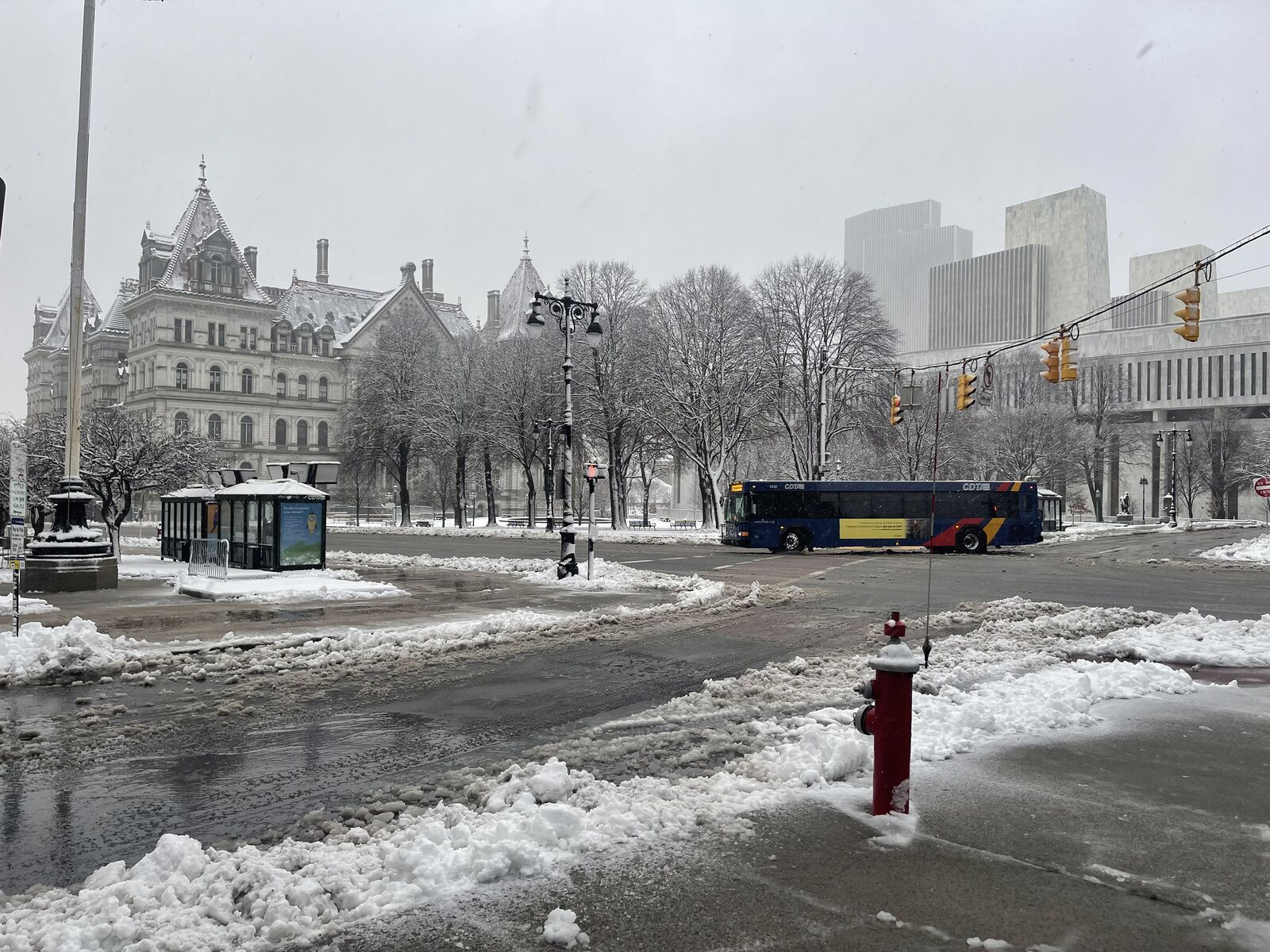 |
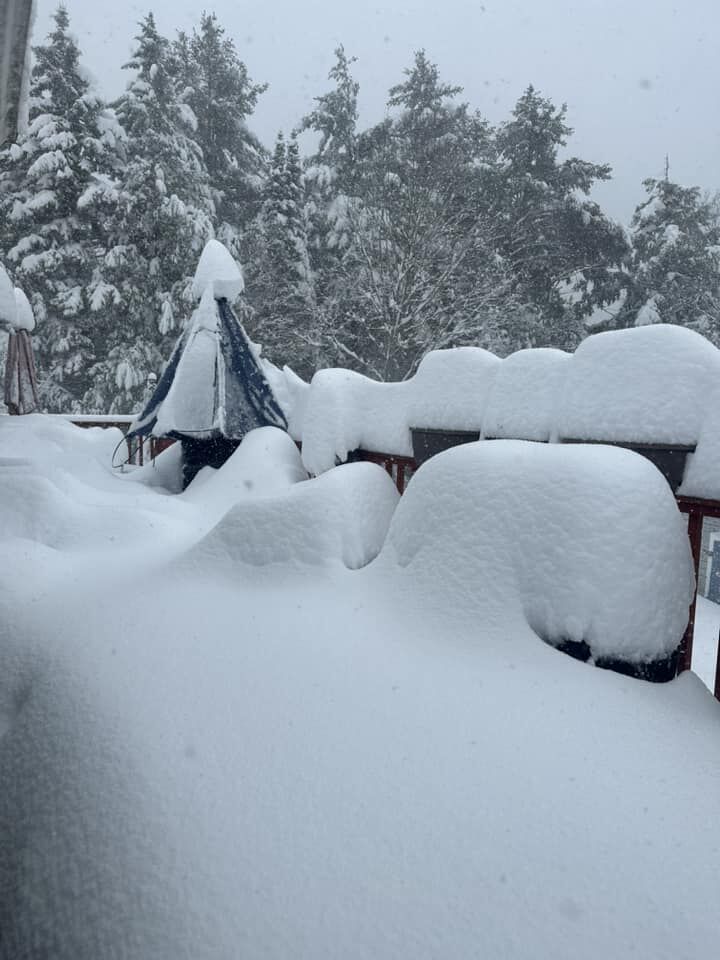 |
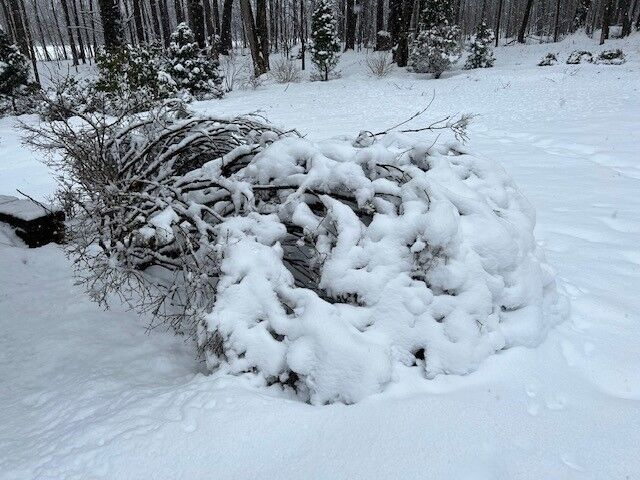 |
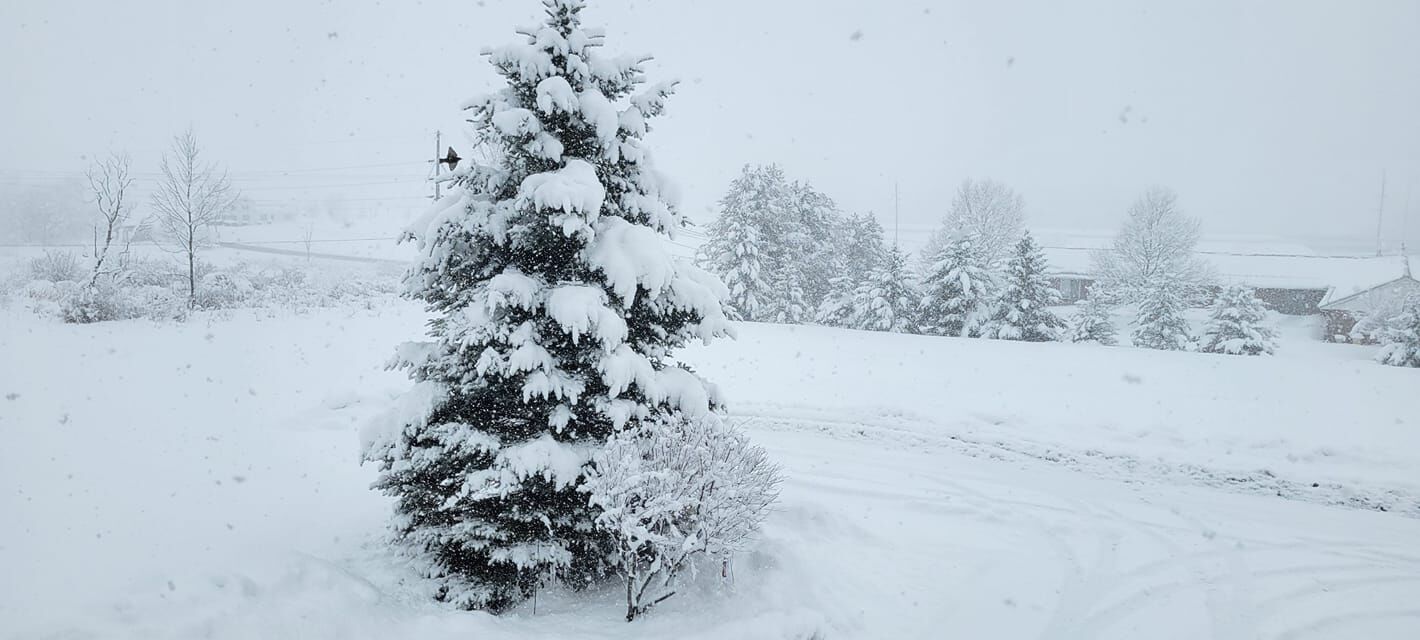 |
| Slushy but otherwise wet streets in Albany on March 14, 2023 (CBS6 Photo) |
Berlin, Rensselaer County on March 14, 2023 (Photo by Brianna Brann courtesy of CBS6) |
Clifton Park, Saratoga County on March 14, 2023 (Steve LaPointe/CBS6) |
Cobleskill, Schoharie County on March 14, 2023 (Photo by Linda Borowsky courtesy of CBS6) |
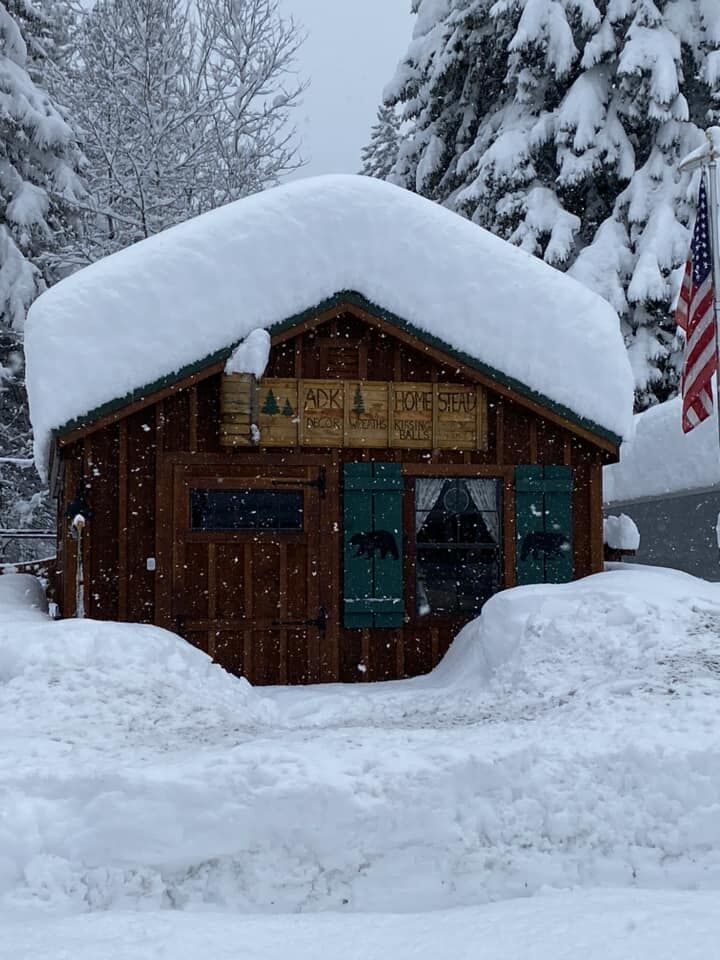 |
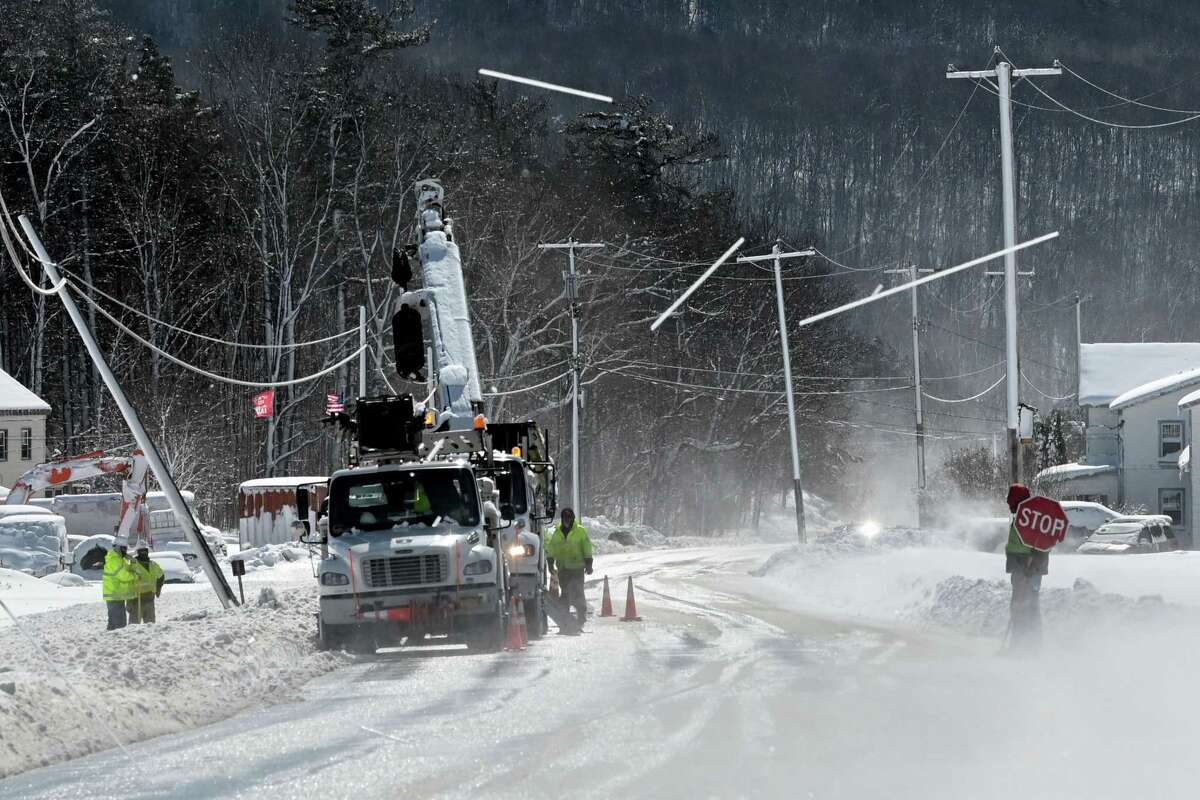 |
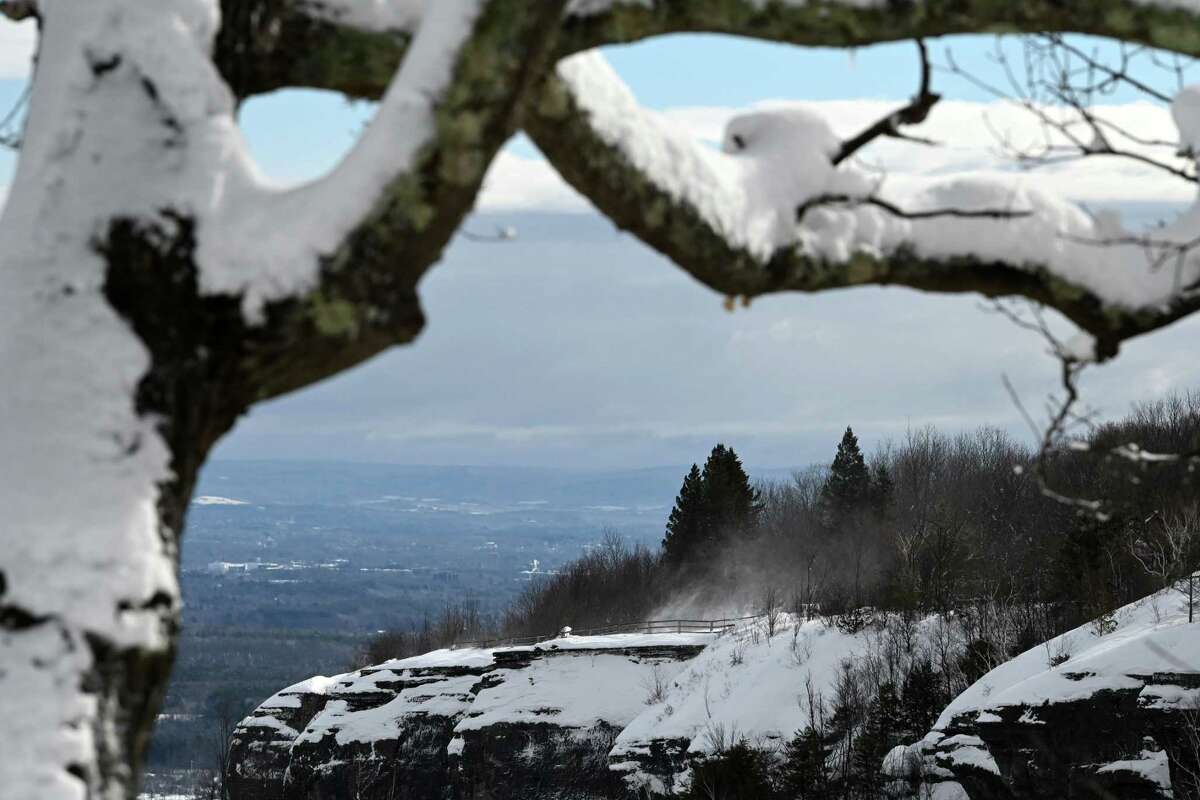 |
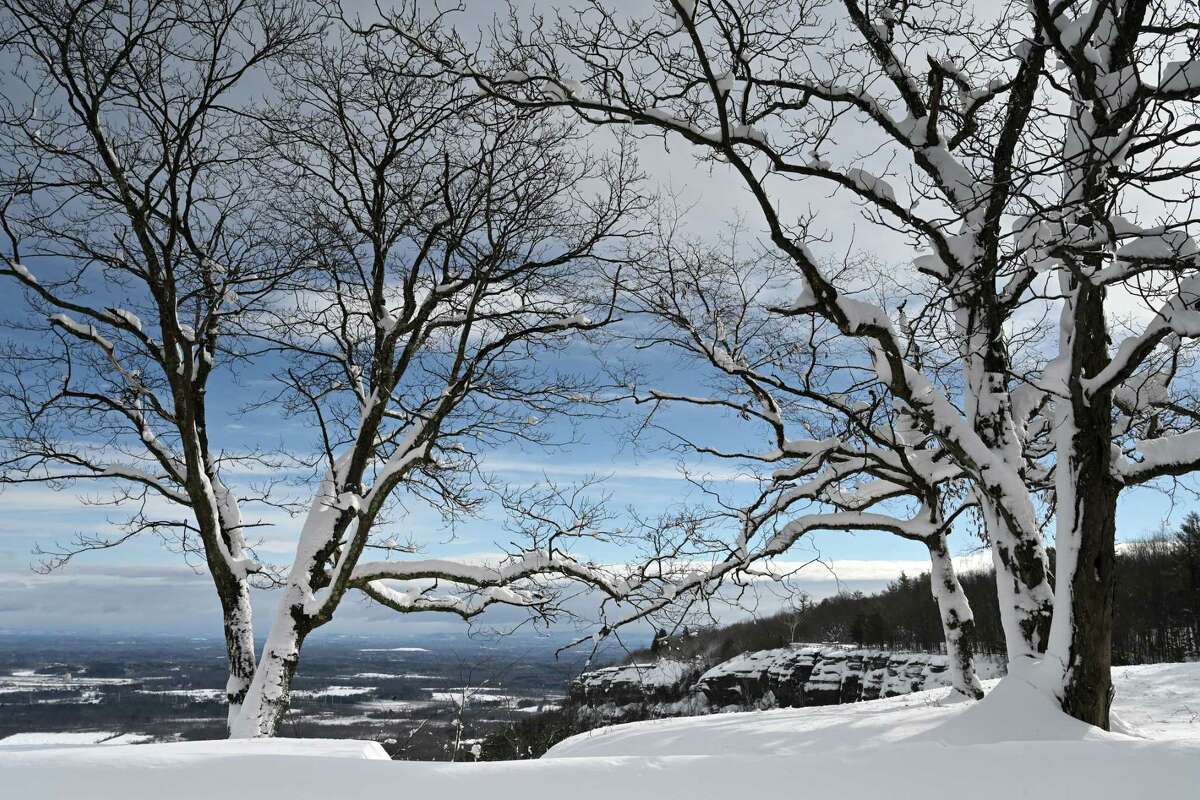 |
| Indian Lake, Hamilton County (Photo by Linda Thivierge McInerney courtesy of CBS6) |
National Grid crews repair a utility pole on Route 443 near Meadow Brook Farms Dairy in Clarksville, NY (Will Waldron/Times Union) |
Snow-laden branches decorate the overlook at John Boyd Thacher State Park on March 15, 2023 in New Scotland, NY (Will Waldron/Times Union) |
Snow-laden trees decorate the overlook at John Boyd Thacher State Park on March 15, 2023 in New Scotland, NY (Will Waldron/Times Union) |
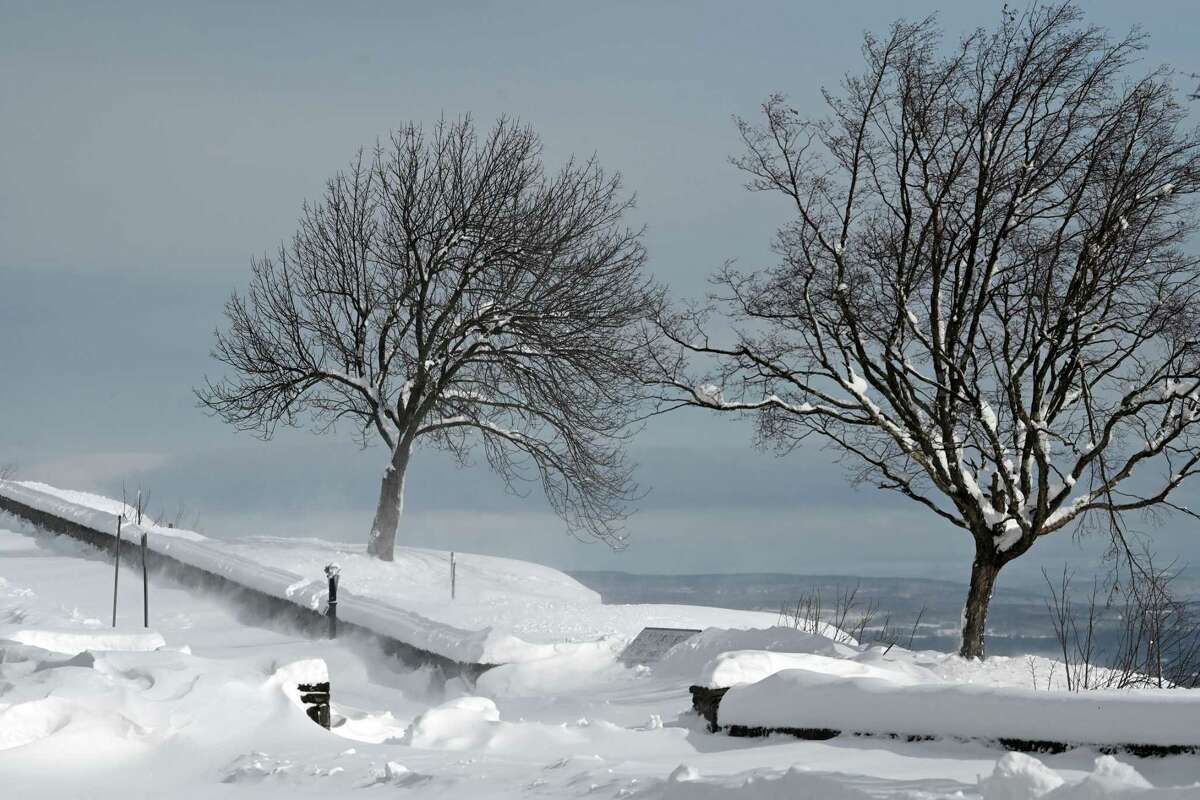 |
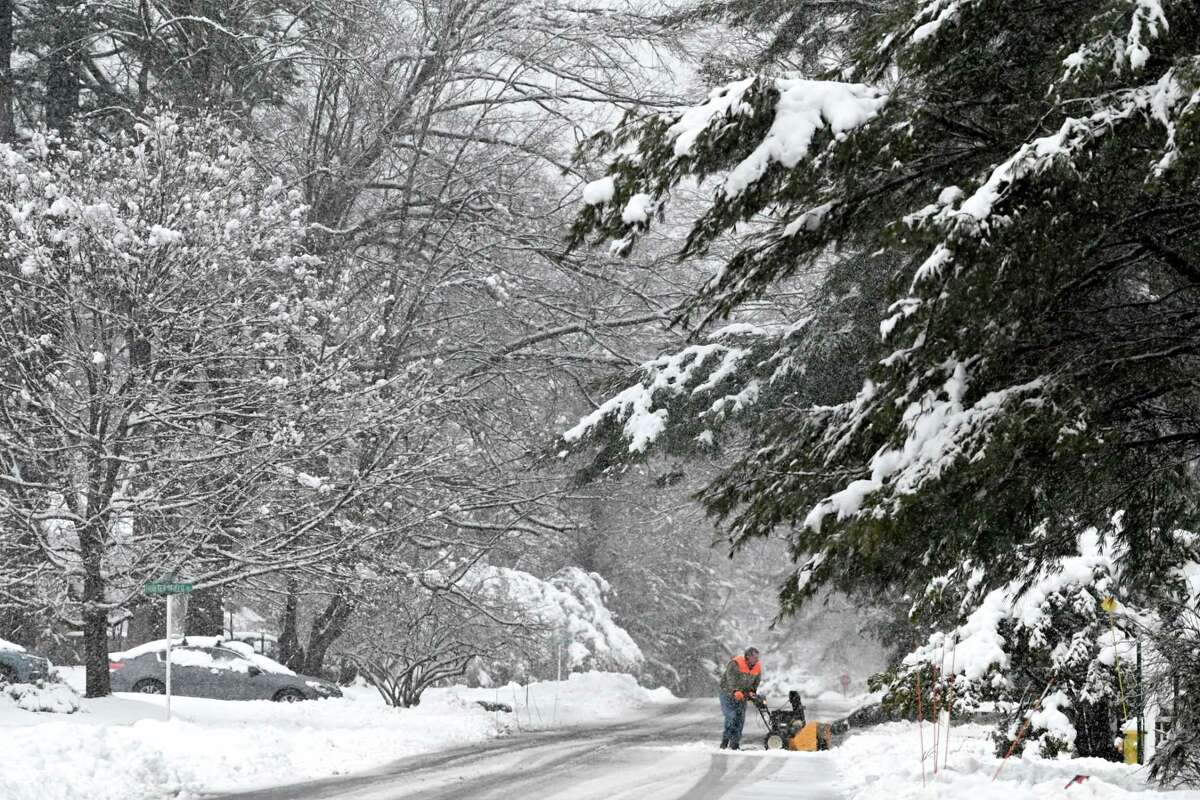 |
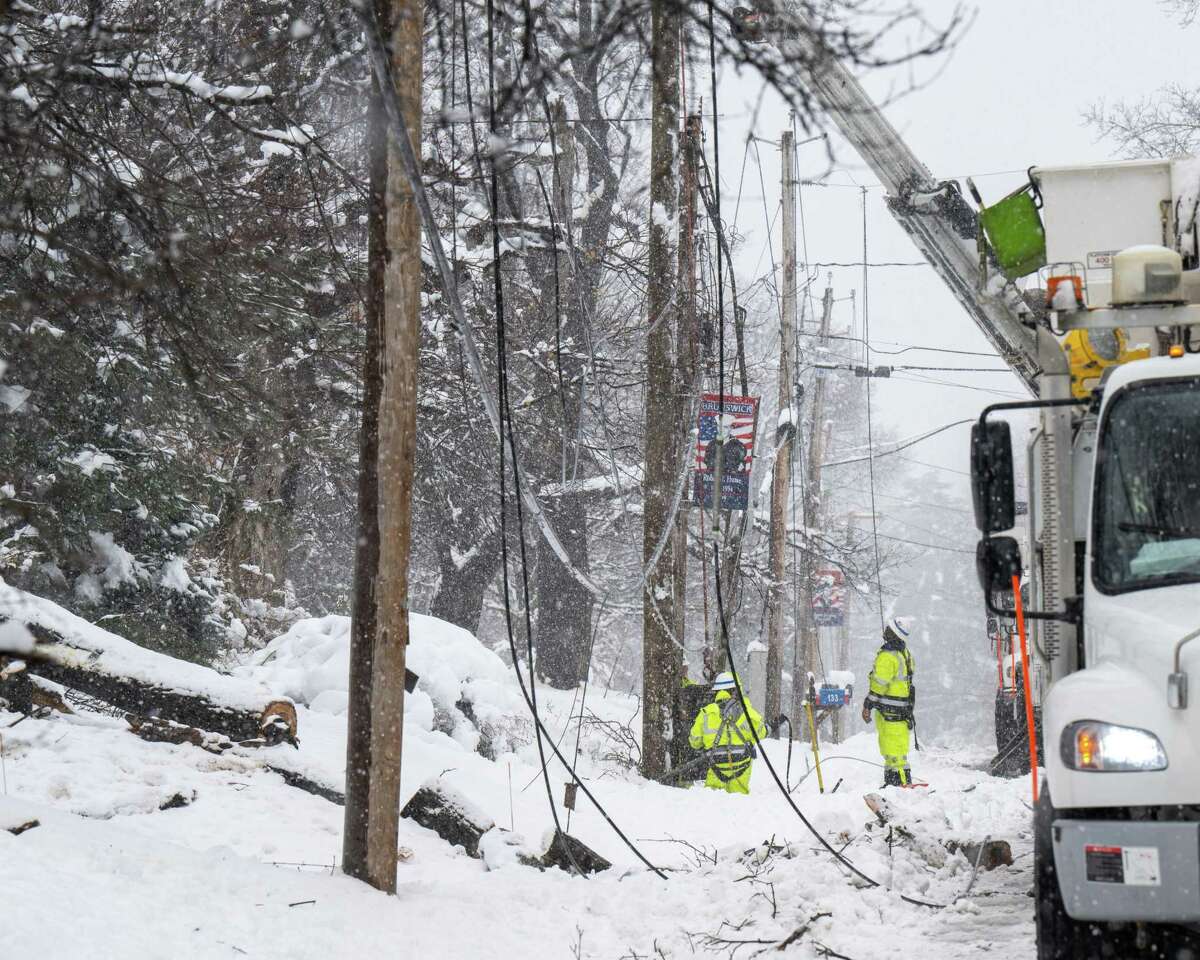 |
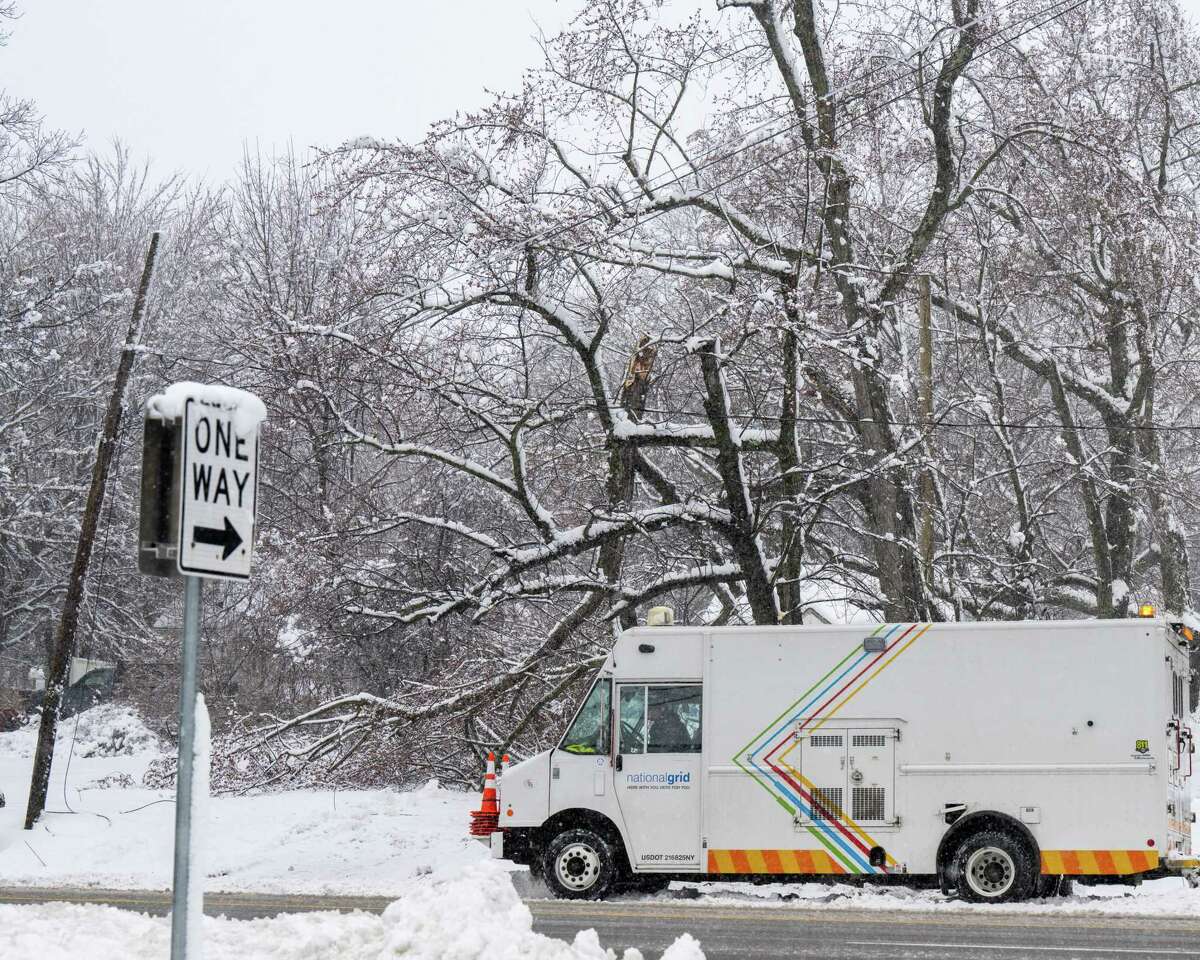 |
| Snow is whipped up by strong winds at the John Boyd Thacher State Park overlook on March 15, 2023 in New Scotland, NY (Will Waldron/Times Union) |
Snow is cleared from a driveway in Delmar, NY on March 14, 2023 (Will Waldron/Times Union) |
A crew from National Grid repairs downed wires along Route 2 in Brunswick, NY on March 14, 2023 (Jim Franco/Times Union) |
National Gird is near a large branch that fell on a wire along Route 9 in Colonie, NY on March 14, 2023 (Jim Franco/Times Union) |
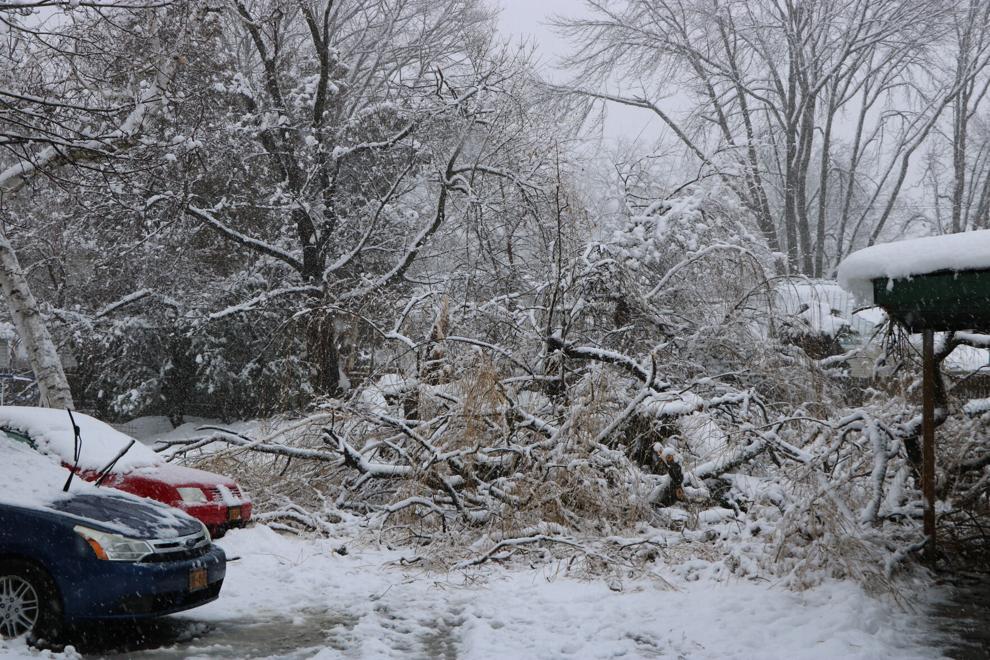 |
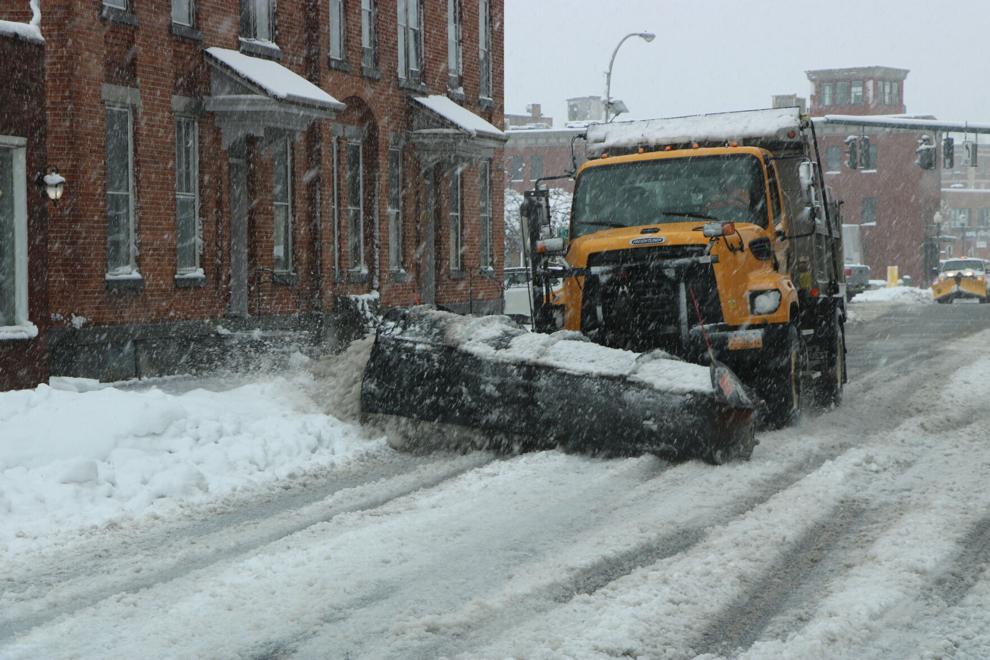 |
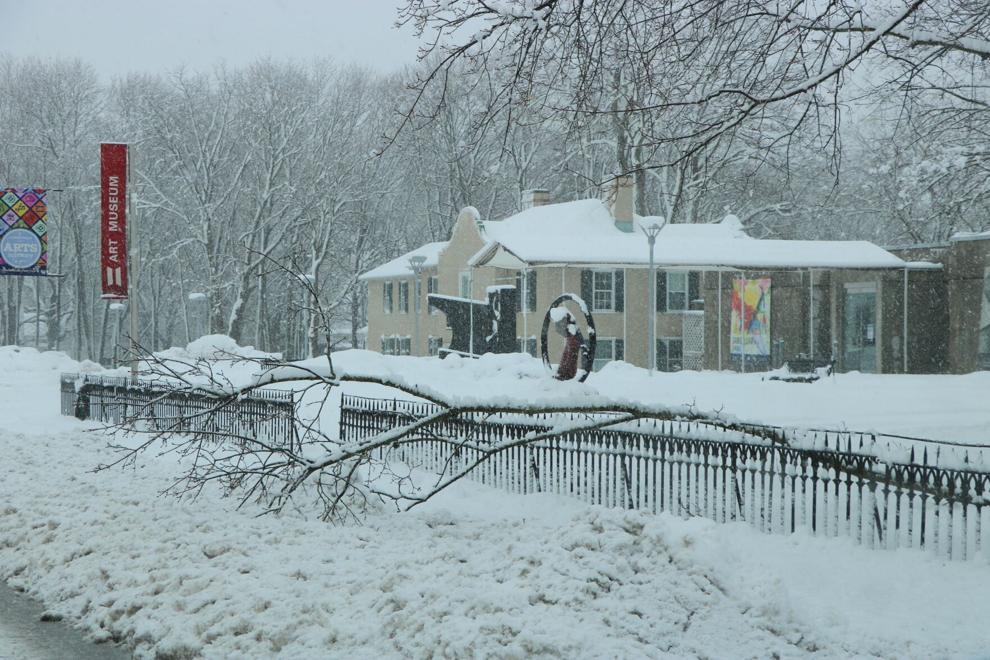 |
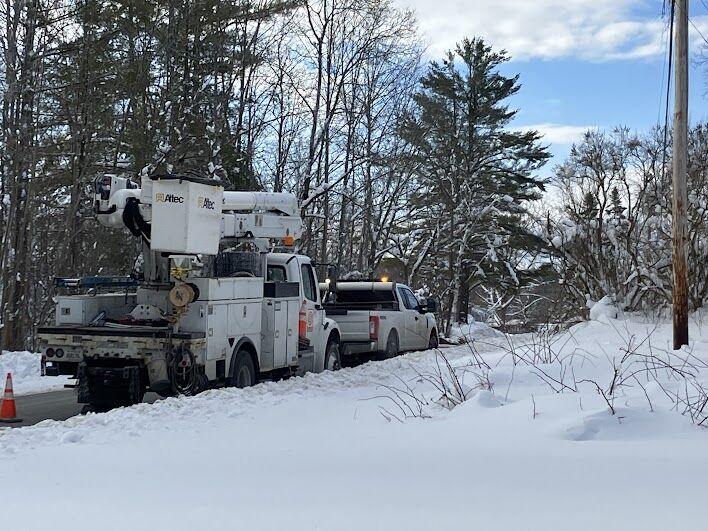 |
| Heavy snow and wind brought a tree down in Hudson Falls, NY (Nick Friedman/Post-Star) |
A plow truck cleans up the streets of Glens Falls, NY on March 14, 2023 (Nick Friedman/Post-Star) |
A large branch broke from the weight of heavy snow on March 14, 2023 near The Hyde Collection in Glens Falls, NY (Nick Friedman/Post-Star) |
Power crews work to repair a downed electric line in Pownal, VT on March 16, 2023 (Tory Rich/Manchester Journal) |
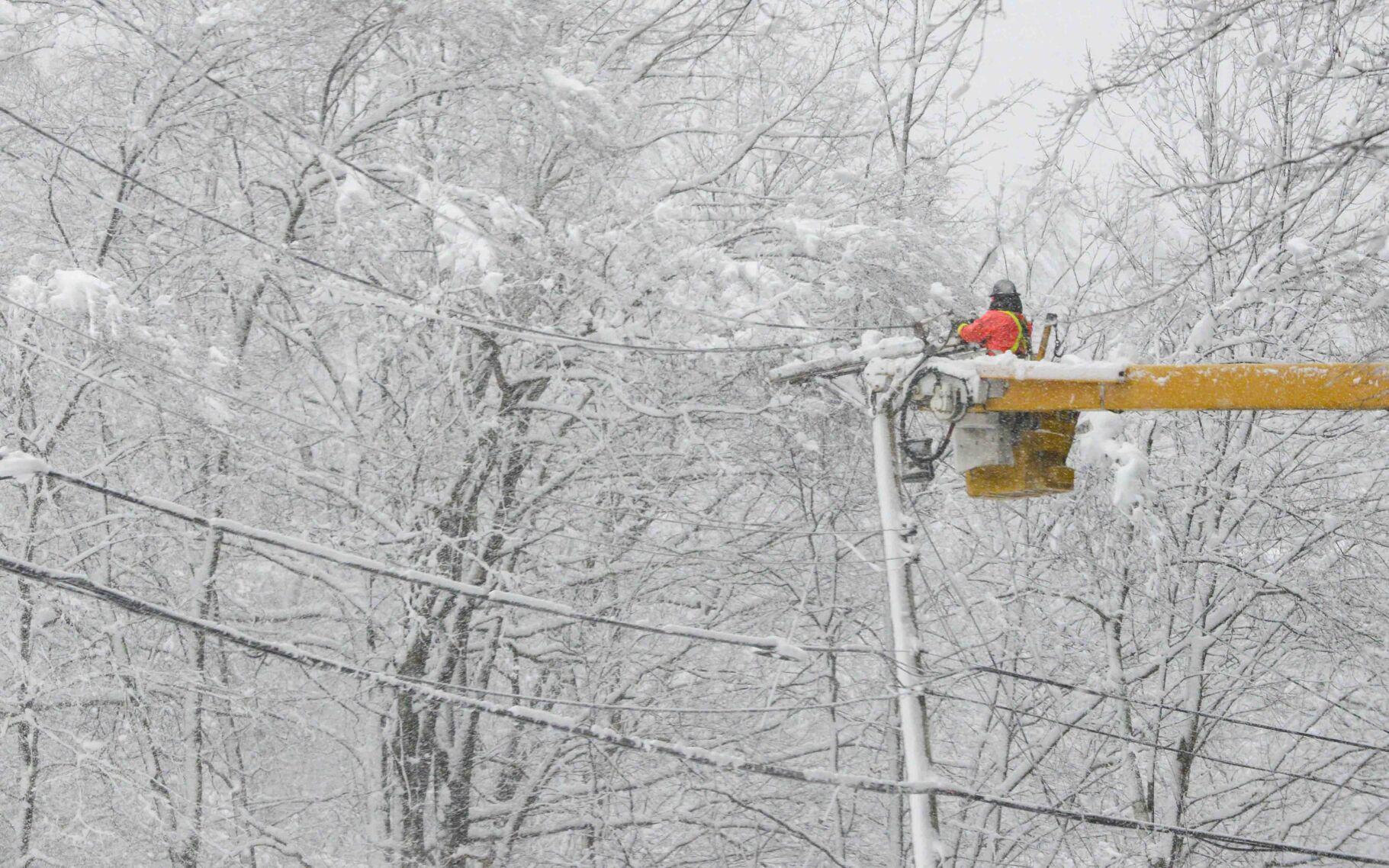 |
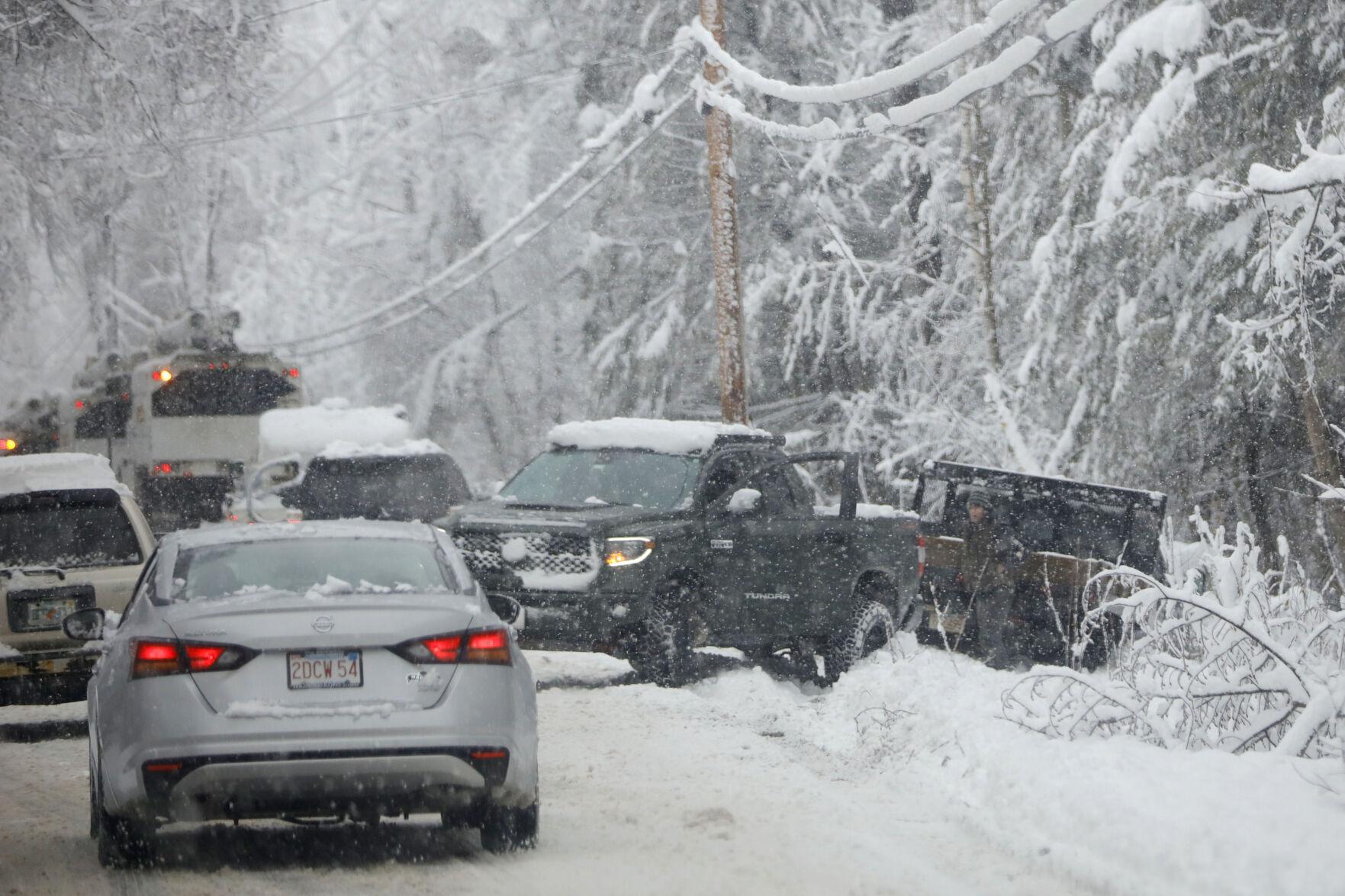 |
||
| Green Mountain Energy fixes a power line on Guilford Road in Brattleboro, VT on March 14, 2023 (Kristopher Radder/Brattleboro Reformer) |
Cars and trucks drive tightly around a pickup truck as it attempts to pull another truck from the snowy embankment on Tamarack Road in Pittsfield, MA on March 14, 2023 (Stephanie Zollshan/Berkshire Eagle) |
Radar
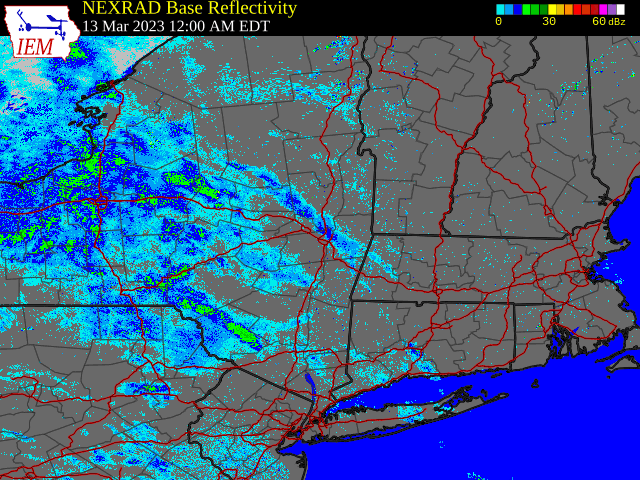 |
| Regional Radar Loop valid 12:00 am March 13 to 12:00 pm March 15, 2023 |
Environment
250 hPa Analysis
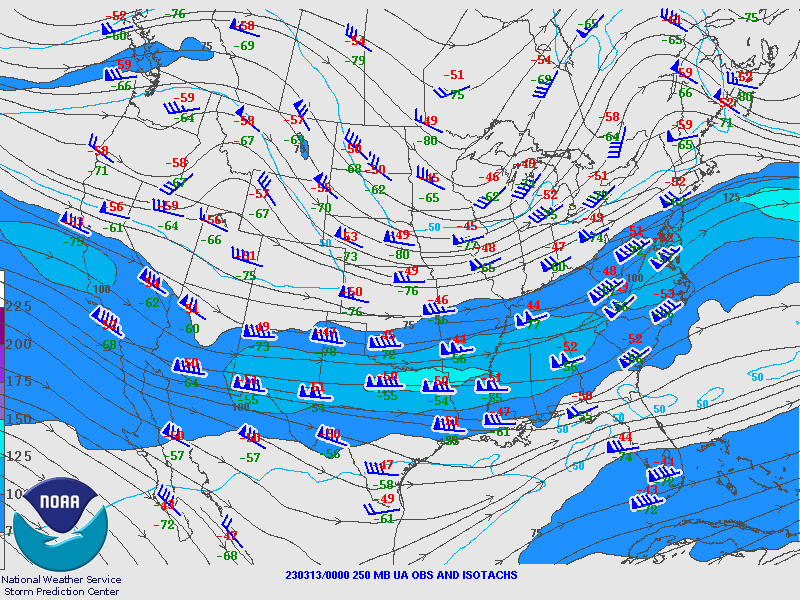 |
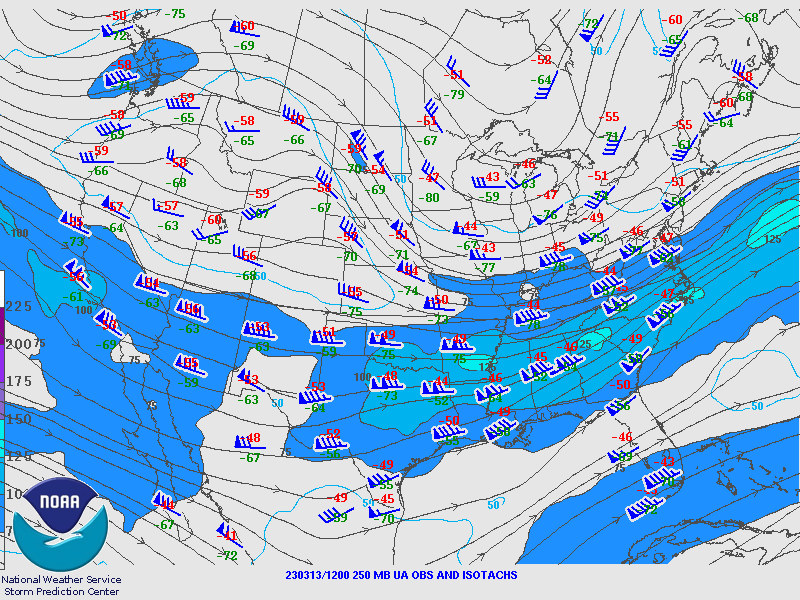 |
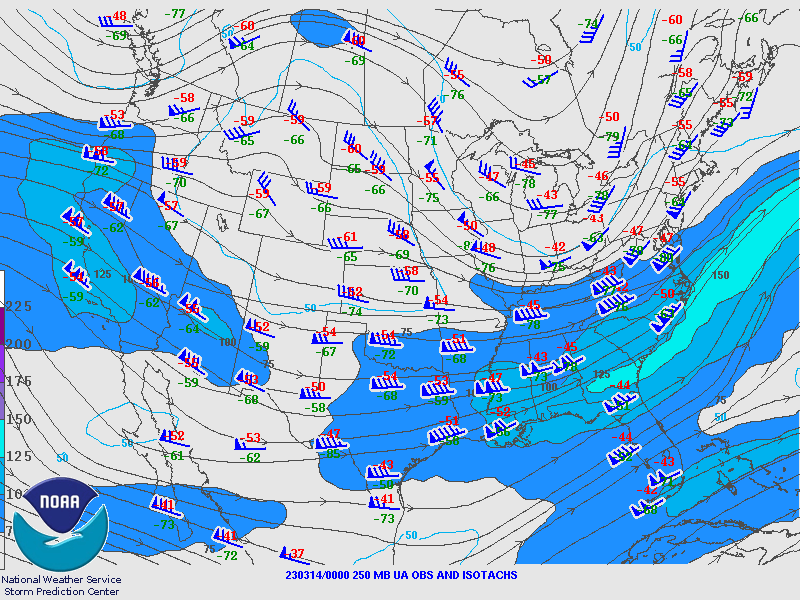 |
| Valid 00z March 13, 2023 | Valid 12z March 13, 2023 | Valid 00z March 14, 2023 |
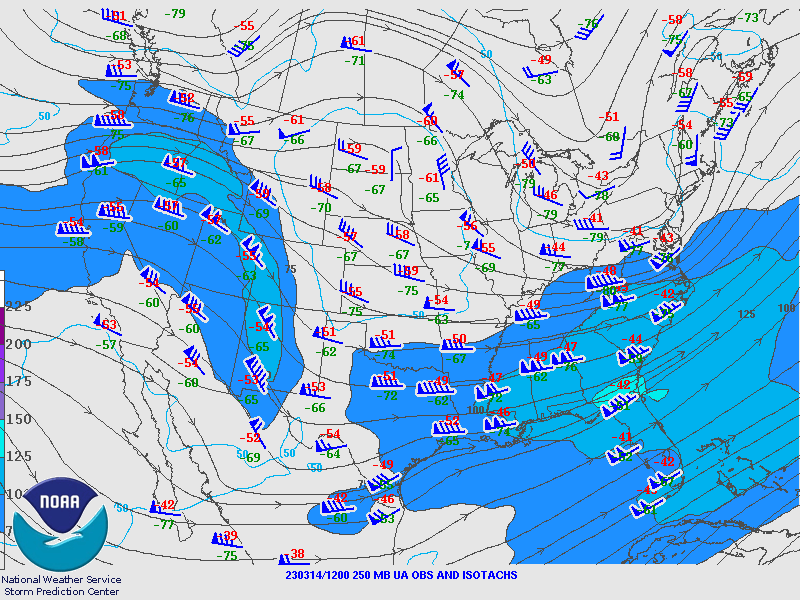 |
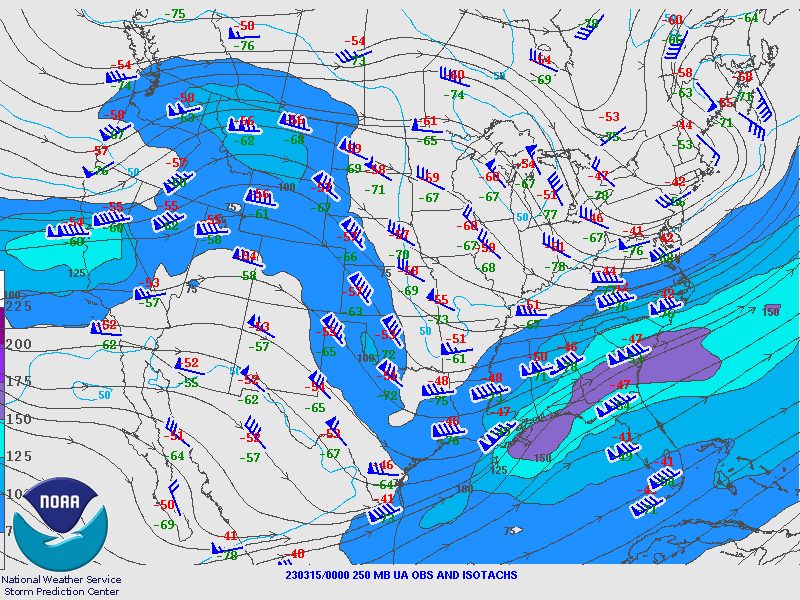 |
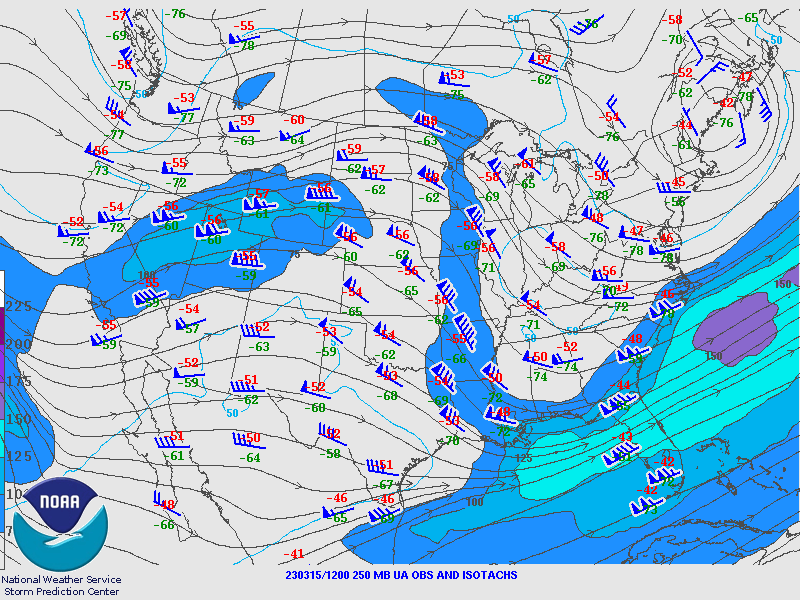 |
| Valid 12z March 14, 2023 | Valid 00z March 15, 2023 | Valid 12z March 15, 2023 |
500 hPa Analysis
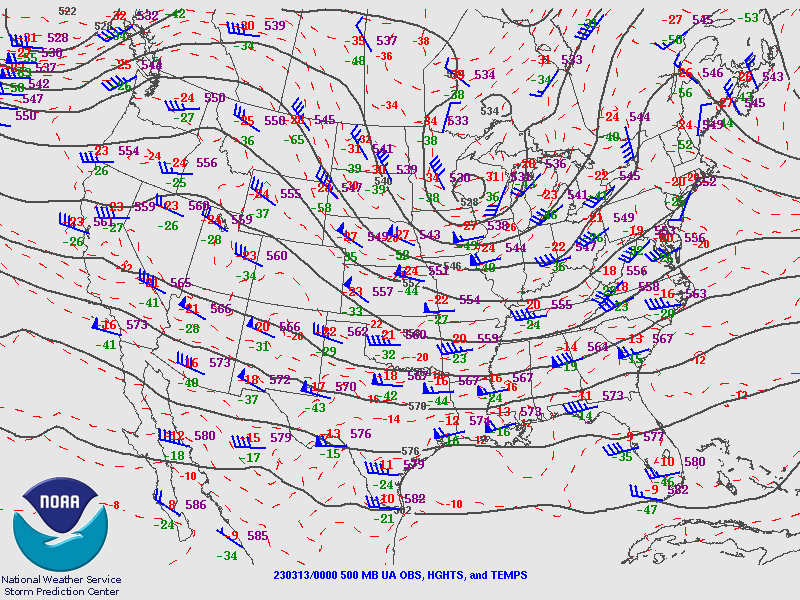 |
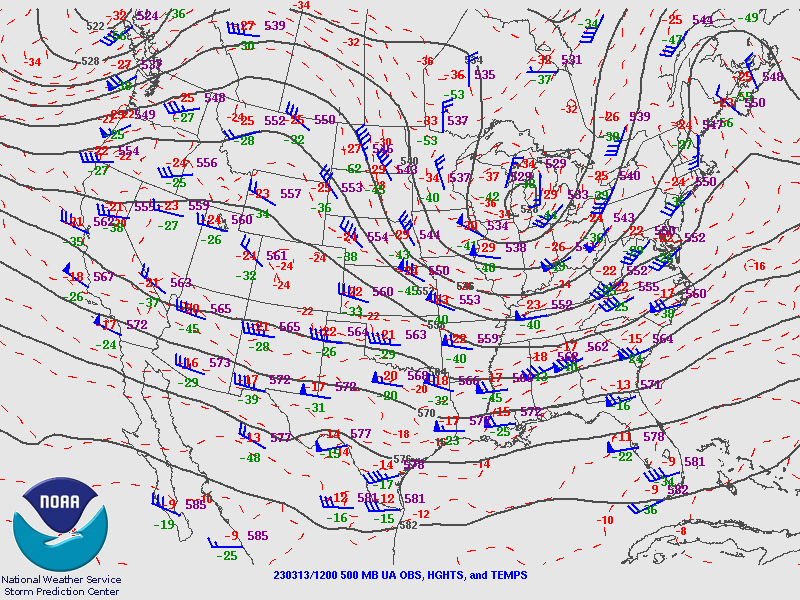 |
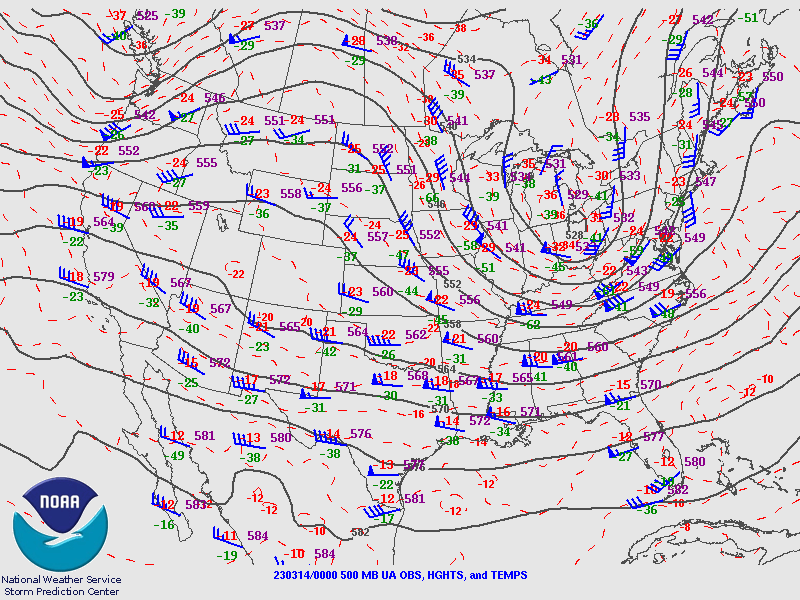 |
| Valid 00z March 13, 2023 | Valid 12z March 13, 2023 | Valid 00z March 14, 2023 |
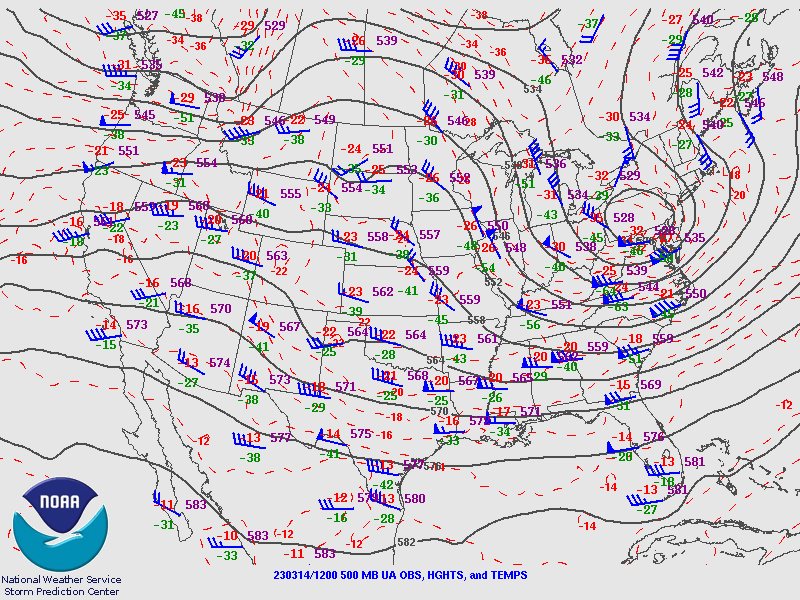 |
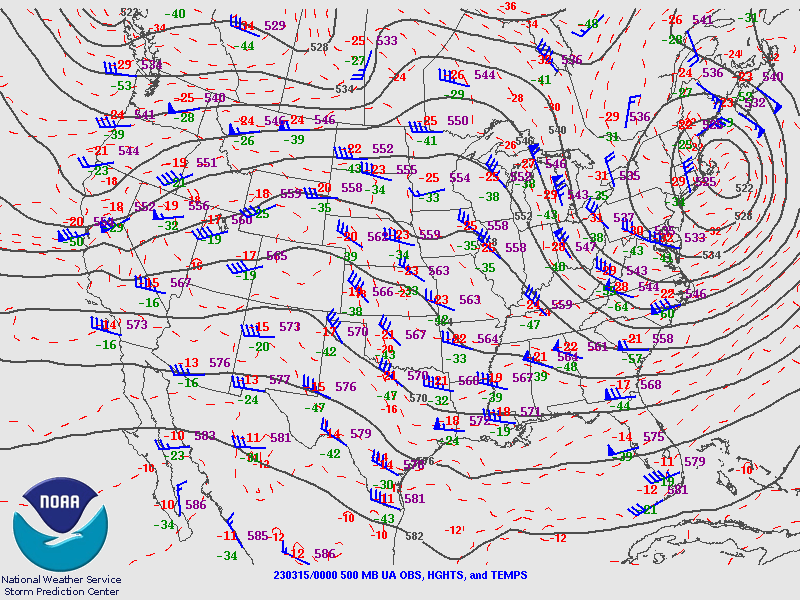 |
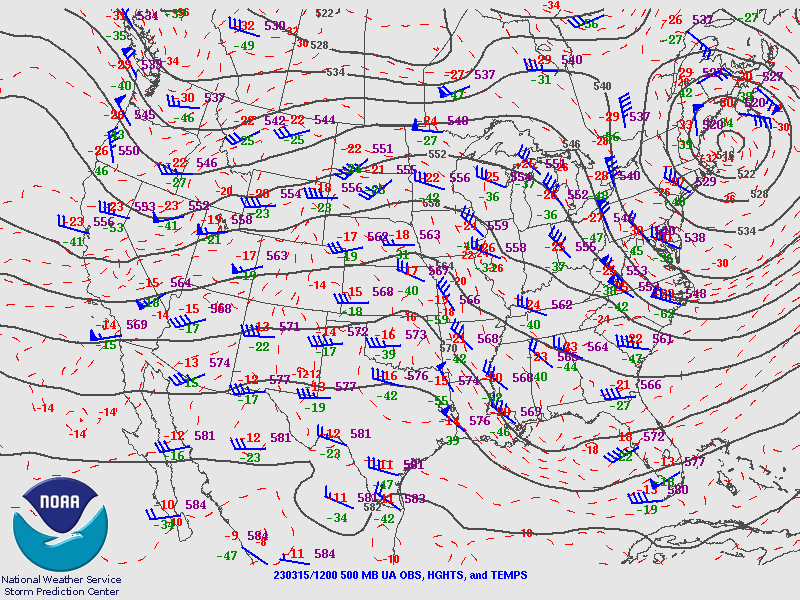 |
| Valid 12z March 14, 2023 | Valid 00z March 15, 2023 | Valid 12z March 15, 2023 |
850 hPa Analysis
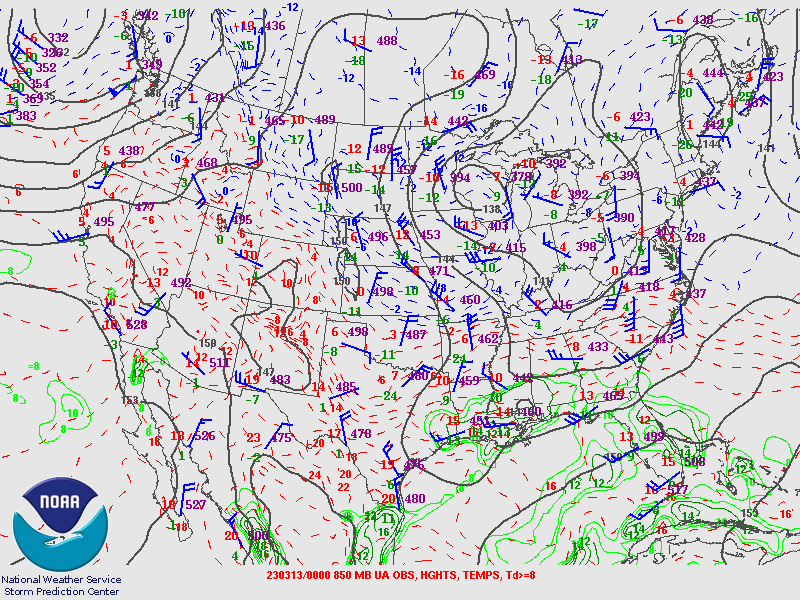 |
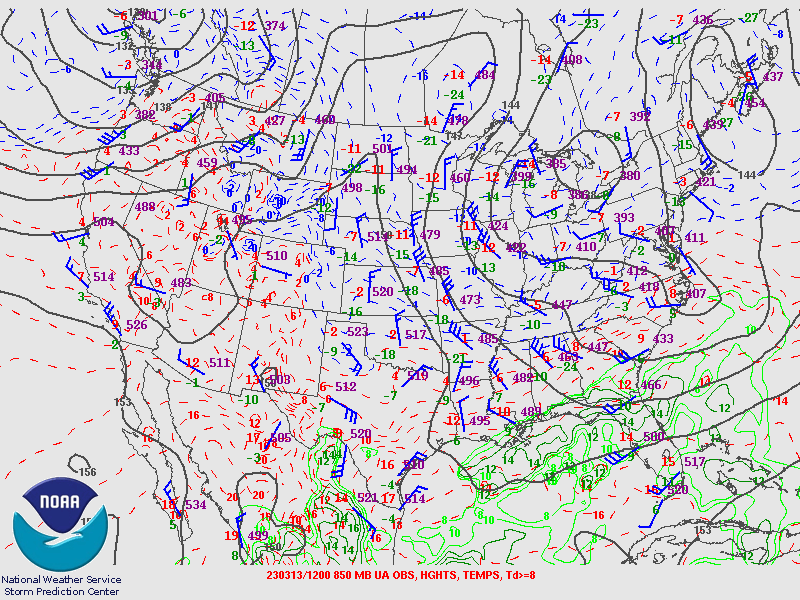 |
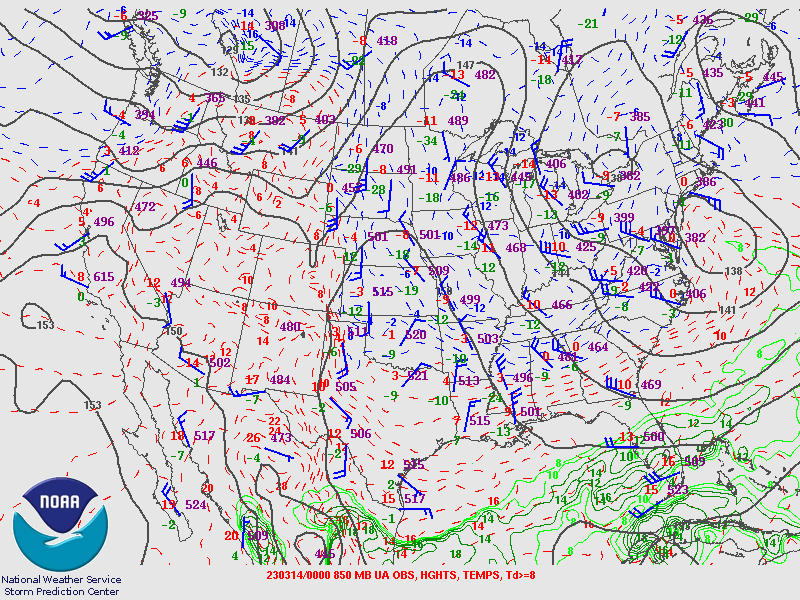 |
| Valid 00z March 13, 2023 | Valid 12z March 13, 2023 | Valid 00z March 14, 2023 |
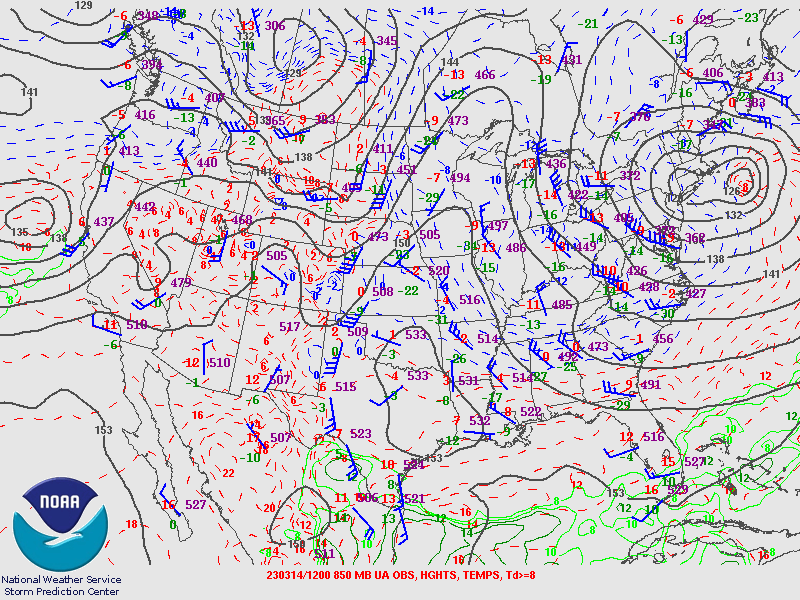 |
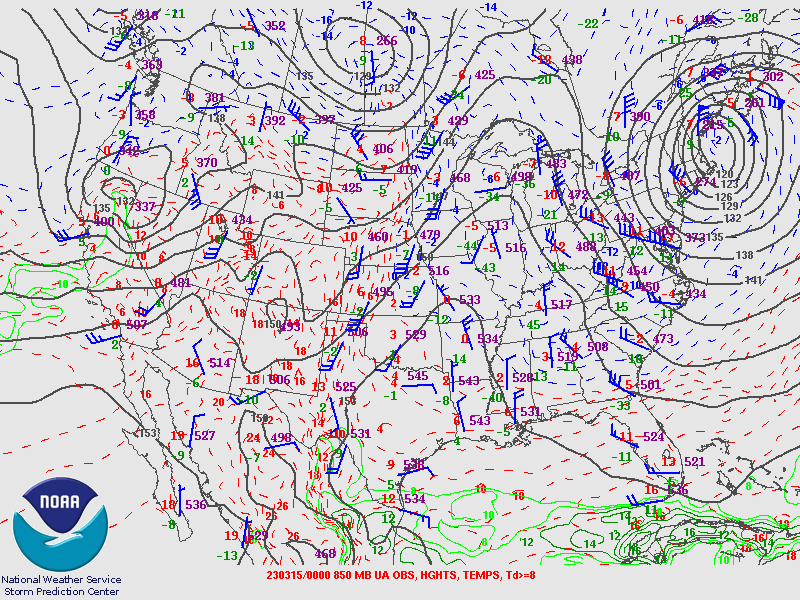 |
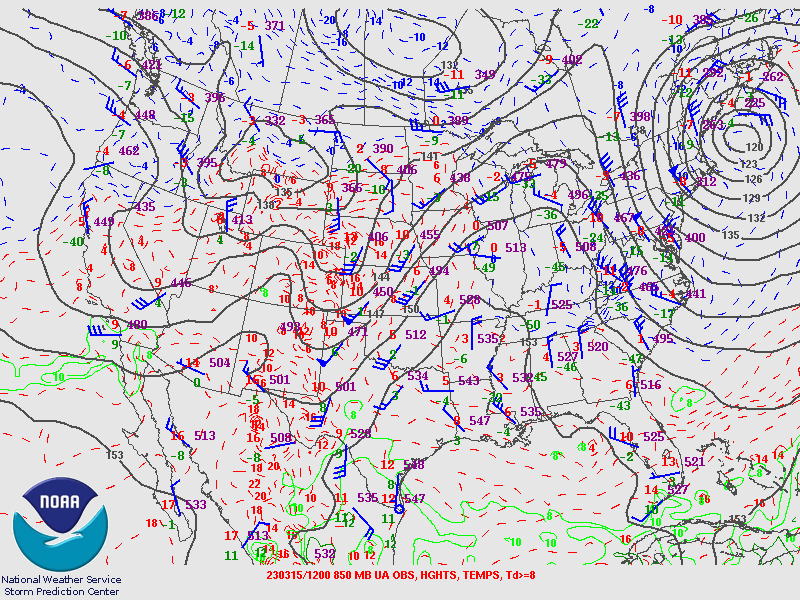 |
| Valid 12z March 14, 2023 | Valid 00z March 15, 2023 | Valid 12z March 15, 2023 |
Surface Analysis
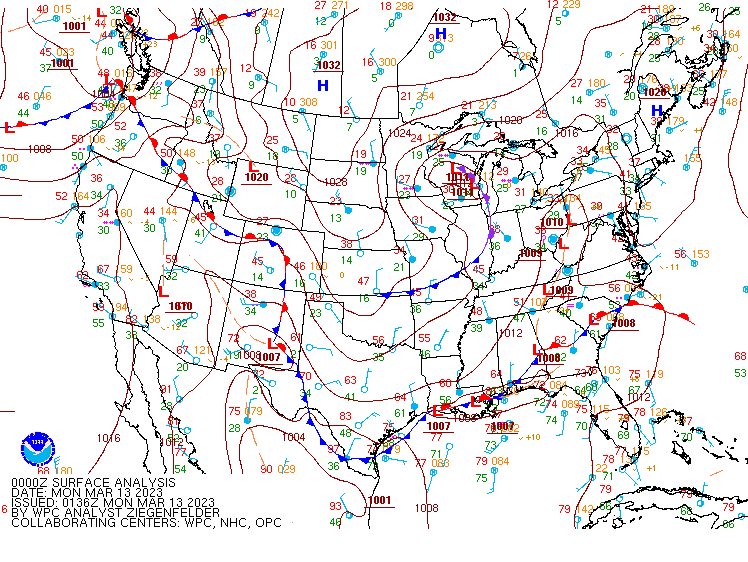 |
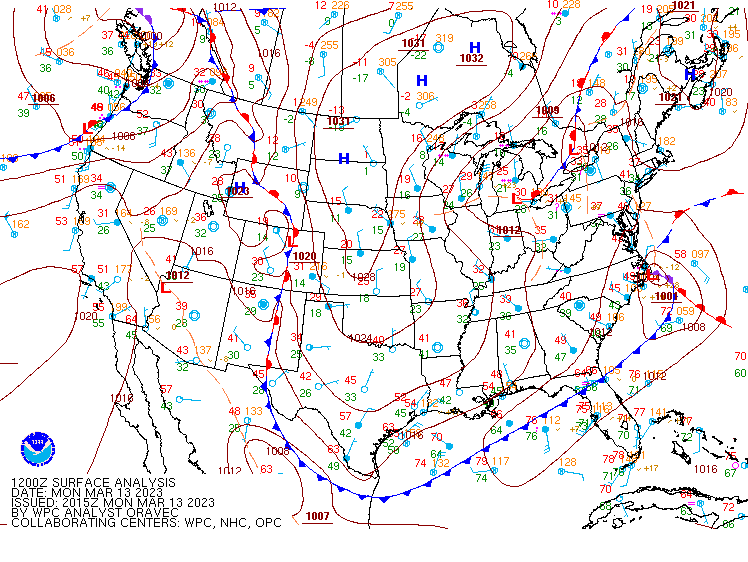 |
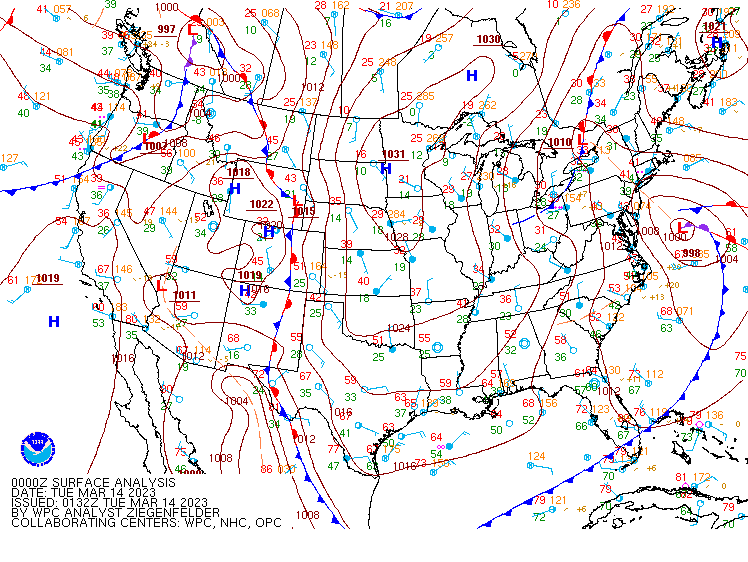 |
| Valid 00z March 13, 2023 | Valid 12z March 13, 2023 | Valid 00z March 14, 2023 |
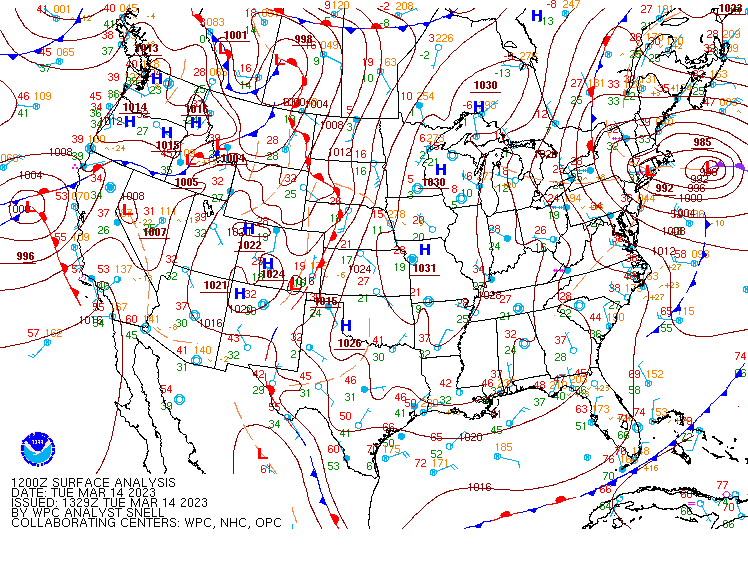 |
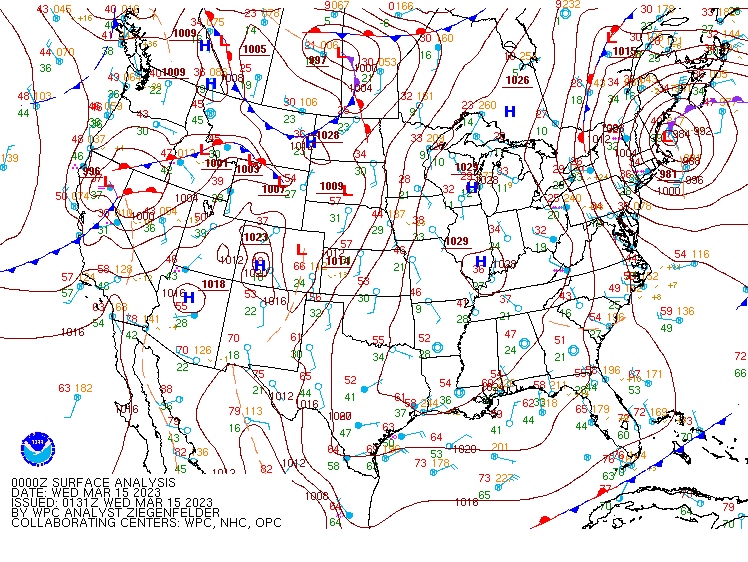 |
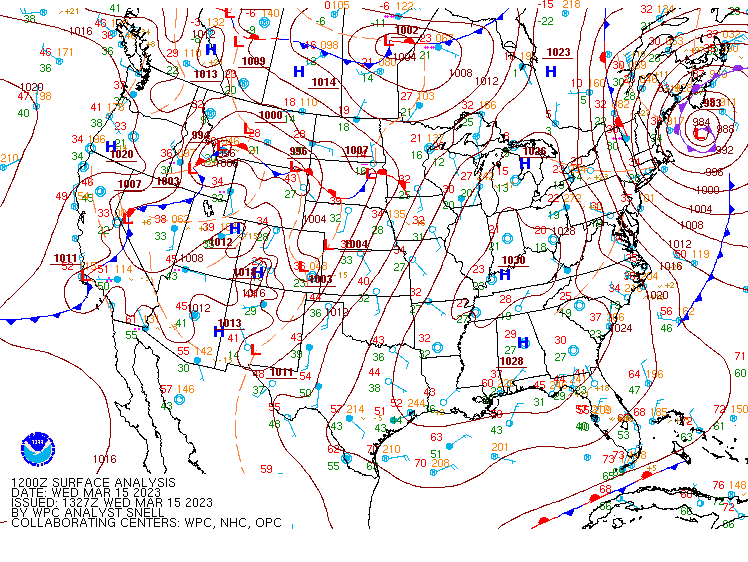 |
| Valid 12z March 14, 2023 | Valid 00z March 15, 2023 | Valid 12z March 15, 2023 |
Forecast Soundings from the University at Albany/NYS Mesonet
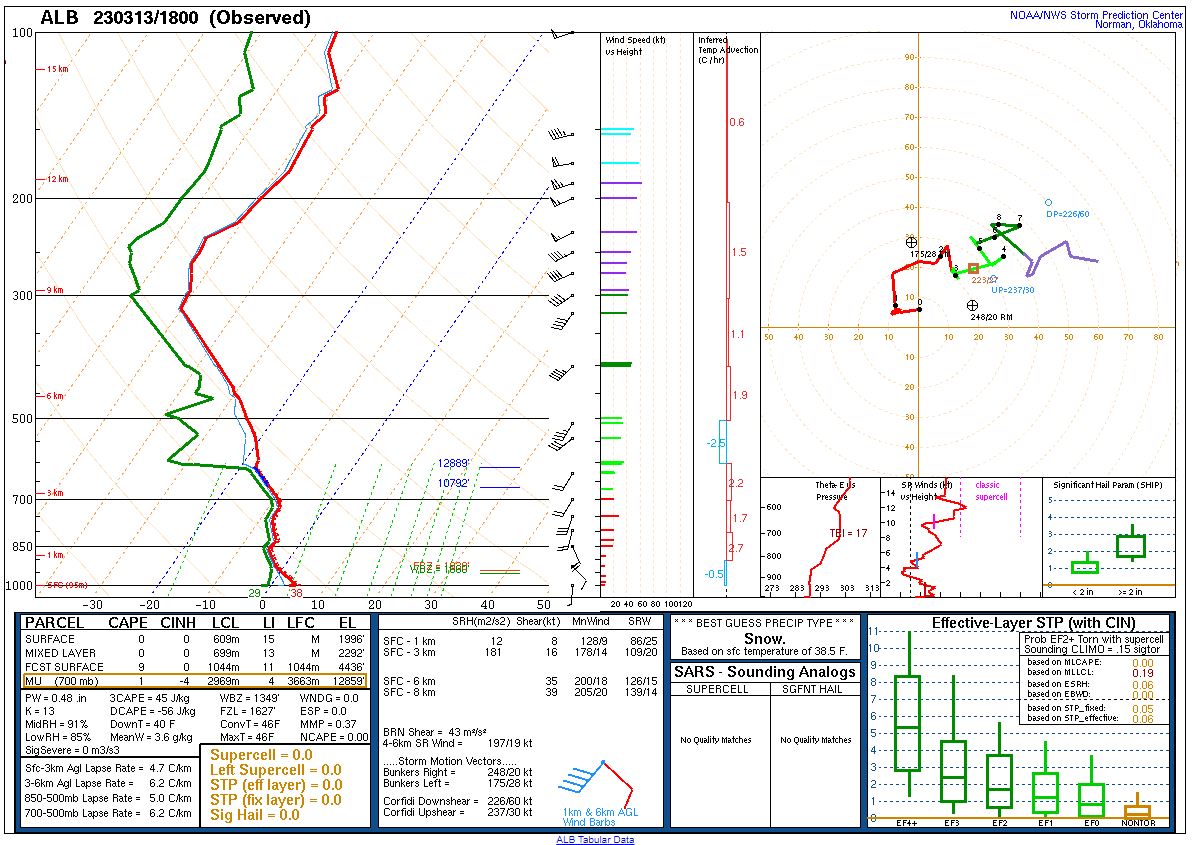 |
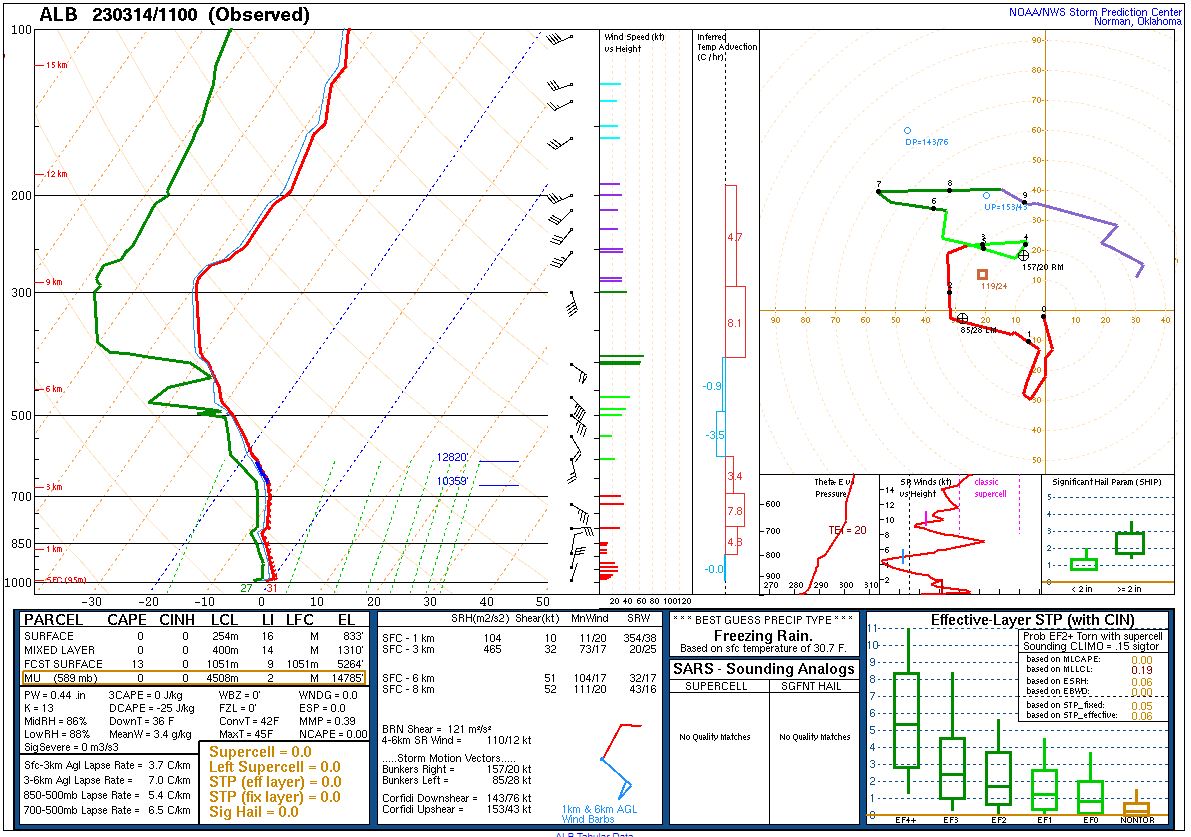 |
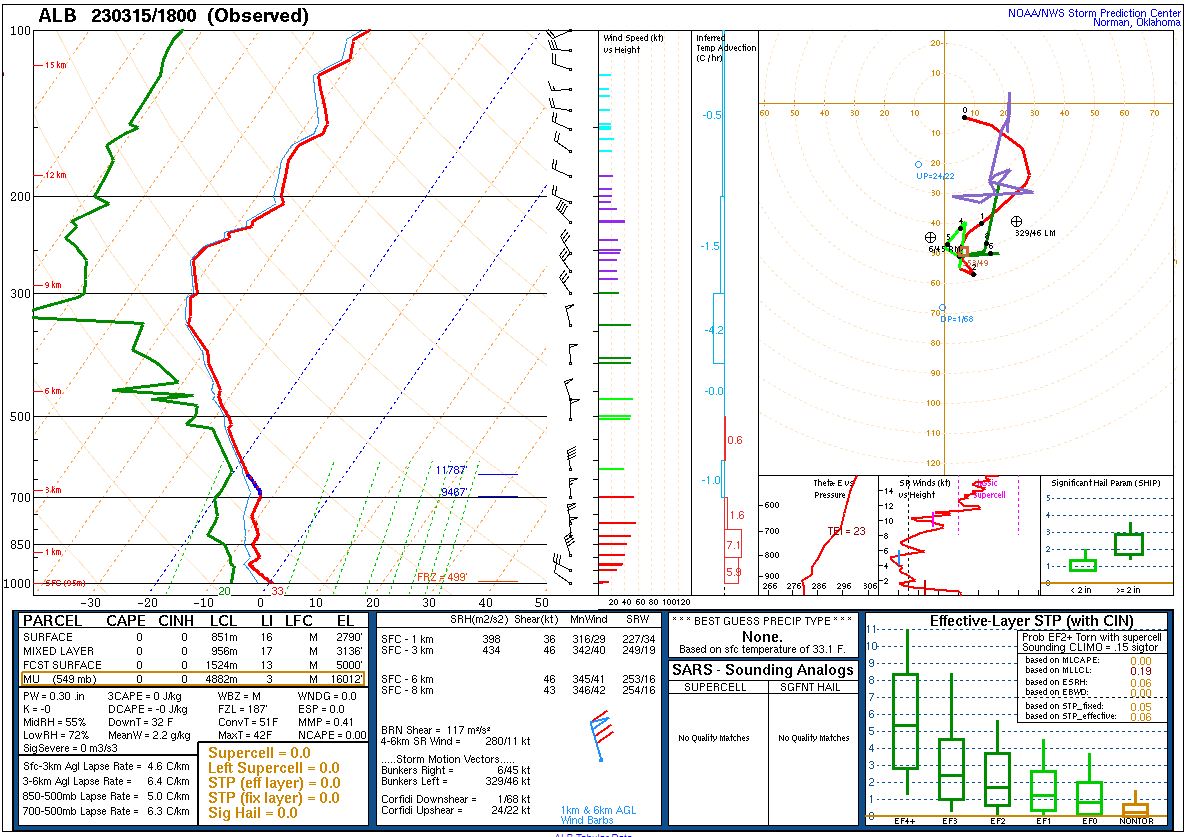 |
| 18z March 13, 2023 | 11z March 14, 2023 | 18z March 15, 2023 |
 |
Media use of NWS Web News Stories is encouraged! Please acknowledge the NWS as the source of any news information accessed from this site. |
 |